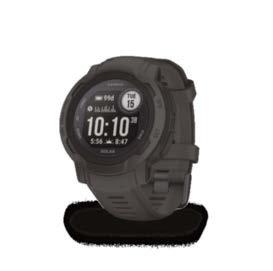




 Magnetic Lens Changing System
Swiftlock Release Lever
Magnetic Lens Changing System
Swiftlock Release Lever








 Magnetic Lens Changing System
Swiftlock Release Lever
Magnetic Lens Changing System
Swiftlock Release Lever


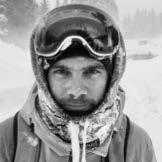
The British action sports and adventure writer travelled from his home in Trentino, Italy, to Switzerland to profile freeskier Kirsty Muir for us. “I’ve covered quite a few ski contests, including two winter Olympics, but I’ve never seen a crowd as big or as hyped as the one at Big Air Chur,” says Kennedy. “Kirsty’s ability to deal with that pressure was awe-inspiring.” Page 28
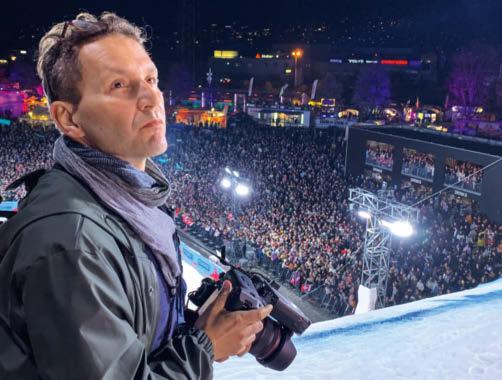
When Kirsty Muir (page 28) first set skis on an Aberdeen dry slope at the age of three, she had no idea it would shape the course of her life. But, as this month’s subjects prove, passions can lead you to surprising places. We caught up with Muir in Switzerland – where she was flexing the freeski prowess that has taken her around the world and onto this month’s cover of The Red Bulletin – to find out how the 18-year-old Scot sharpened her exceptional skills.
Also honed in Scotland, the rare two-wheeled talents of Danny MacAskill (page 58) have found a second home on the streets of San Francisco. The phenomenal trials rider has spent five years perfecting his latest film in the US city – we take a behind-the-scenes peek in this issue.

Published in The New York Times, Victory Journal and VICE, the Brooklyn-based journalist has documented offbeat topics including rural Colombian bullfighting, the world’s best checkers players and Cuban baseball. It made him ideal for our story on the Call of Duty community in Frisco. “There are interesting worlds hidden around us, even in mundane and unexpected places,” Swide says. Page 40
And from his bedroom in Liverpool to a high-stakes battle in Dallas, professional gamer Liam ‘Jukeyz’ James has been on his own improbable journey thanks to Call of Duty: Warzone. Jukeyz is one of the many players who has made the pilgrimage to low-latency mecca Frisco, Texas (page 40), in search of the ultimate gaming experience. Enjoy the issue.
Page 28



The iconic range returns.
8 Gallery: the tech, the teamwork and the training – preparation for the 37th America’s Cup starts here. Plus highlights from global photography contest Red Bull Illume, including BMX artistry in Philadelphia, creative skating in Mexico City, and climbing for comets in California
15 Greenback tracks: artist and producer Danger Mouse revisits four formative tunes
16 Form of remembrance: Holding the Flame – the AR statue that’s keeping social history alive
19 ‘Robot Tamer’ Madeline Gannon: making friends not overlords
20 Coast story: the Alaskan who’s drawing – and painting and filming – attention to the pollution crisis
The Greek tennis pro explains why mental strength is as vital in the game as a solid backhand 24
The US rapper/activist on sharing new queer narratives, and the long struggle to speak their truth 26
Seeing your high-school life played out on screen sounds a nightmare, but not for this Canadian pop twin 28
From Aberdeen dry slope to the ‘Glastonbury of snow sports’, the freeskiing teen is in the ascendency
Why are gamers flocking to Dallas? A love of 10-gallon hats and JR Ewing? Nope, it’s all about the ping 50
For this Finnish freediver, beneath the ice is a place where time stands still and records are broken 58
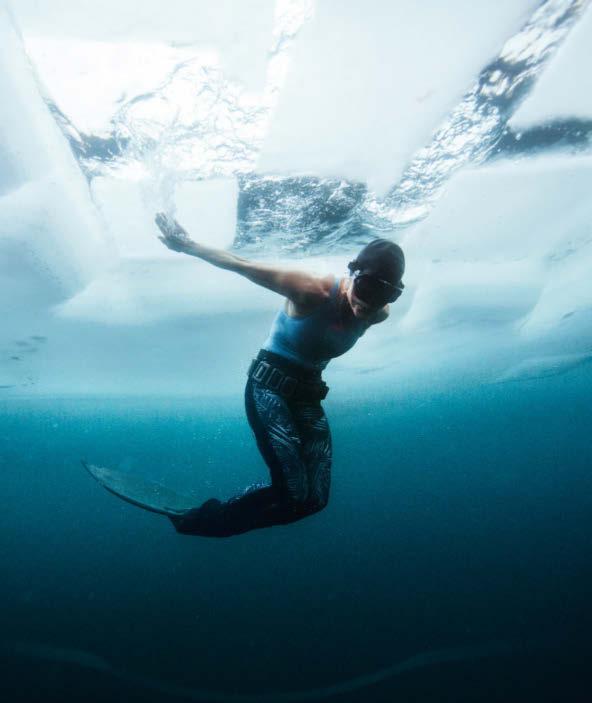
The bike ace talks us though his latest labour of love: a postcard from San Francisco, five years in the making
69 Top deck: sailing an Ocean Race yacht is mentally taxing, stomachchurning, claustrophobic and exhausting, but in the nautical world it’s hard to beat 74 Powder dressing: if you’re heading for the slopes, you need this gear 84 Vegetarians are weaklings? Tell that to this champion powerlifter
87 Ride high: the Wahoo Kickr Climb raises your indoor cycling game 88 Dune it right: how to nail new video game Dakar Desert Rally 90 Snow and steady: the highs and lows of being a ski patroller 92 Essential dates for your calendar 98 Outdoors wisdom from Semi-Rad
The life aquatic: Johanna Nordblad feels at home in the icy waters of the Arctic
An AC75 foiling monohull lifts out of the waters of the Mediterranean during a test run in October. This is BoatZero – the training yacht of Alinghi Red Bull Racing, a challenger for the 37th America’s Cup in 2024. The world’s longest continuously running sporting event (founded in 1851) and the pinnacle in yacht racing, the America’s Cup draws the best sailors and pushes the envelope in sail engineering. It’s also expensive – it can cost more than $100 million to take part – but Alinghi knows the deal, having won in 2003 and 2007. Now, the Swiss team is soaring back into the fray with a partner renowned for delivering in another bleeding-edge sport – F1 –and sailing under the banner of yacht club Société Nautique de Genève. It hasn’t been an easy ride – the boat capsized on its maiden sail just weeks earlier – but helmsman Arnaud Psarofaghis is confident they’ve got what it takes. “Since that training session the team has progressed at every level,” he says.
 Photographer: Samo Vidic; redbullcontentpool.com
Photographer: Samo Vidic; redbullcontentpool.com

Maryland-born lensman Andrew Dixon had a clear aim with this shot of BMX ace Joshny Babu, which won him a semi-final place in the ‘Emerging by Black Diamond’ category of global photography contest Red Bull Illume. “My goal with this image was to merge two things I love most: shooting action and products,” Dixon says. “I wanted to completely over-engineer the image, which required a total of 10 strobes hoisted around the rider. It took tons of attempts because of the sheer amount of light that was being thrown at him, but at the end of the day we walked away with an awesome image.” adixonphoto.com; redbullillume.com


As a concert photographer, Luis Alejandro Arriaga Osorio has shot the likes of Muse and Billie Eilish, but his other speciality – action sports imagery –requires him to view the world through a different lens. Take this shot of skater Diego Alvarez – a finalist in Red Bull Illume’s ‘Creative by Skylum’ category. “This building is peculiar because of its shape, but all you have to do is turn your head to give it a new dimension,” says the snapper. “It became a colossal bowl with the architecture inbetween… In my mind I visualised it immediately.”
Instagram: @luisarriagaph; redbullillume.com
Forget AstroBranson and the MuskModule – the wonders of the cosmos can be seen without leaving Earth. Priscilla Mewborne proved this in downtime on a climbing shoot in Yosemite. “I was following the movements of the visible comet Neowise,” says the US photographer/aerialist, whose shot was a Red Bull Illume ‘Lifestyle by COOPH’ finalist. “It was expected to peak in the middle of my work week, but luckily a motivated group of fellow employees was keen to experience it, too.” Next day, it was back to work of a more terrestrial kind. Instagram: @lovealwayspriscilla; redbullillume.com



The artist/producer picks four songs that helped define his musical journey
Brian Burton, aka Danger Mouse, has produced tracks by some of music’s biggest names – Adele, Gorillaz and The Black Keys among them – but also has an impressive CV as an artist in his own right. His solo breakthrough was 2004’s The Grey Album, a mash-up of vocals from Jay-Z’s The Black Album and samples from The Beatles’ 1968 ‘White Album’, and as half of Gnarls Barkley he was responsible for the huge 2006 hit Crazy. To mark the release of Into the Blue, the third album by Broken Bells – his project with The Shins singer James Mercer (pictured, left, with Burton) – the 45-year-old picks four songs that left a mark on his life. brokenbells.com
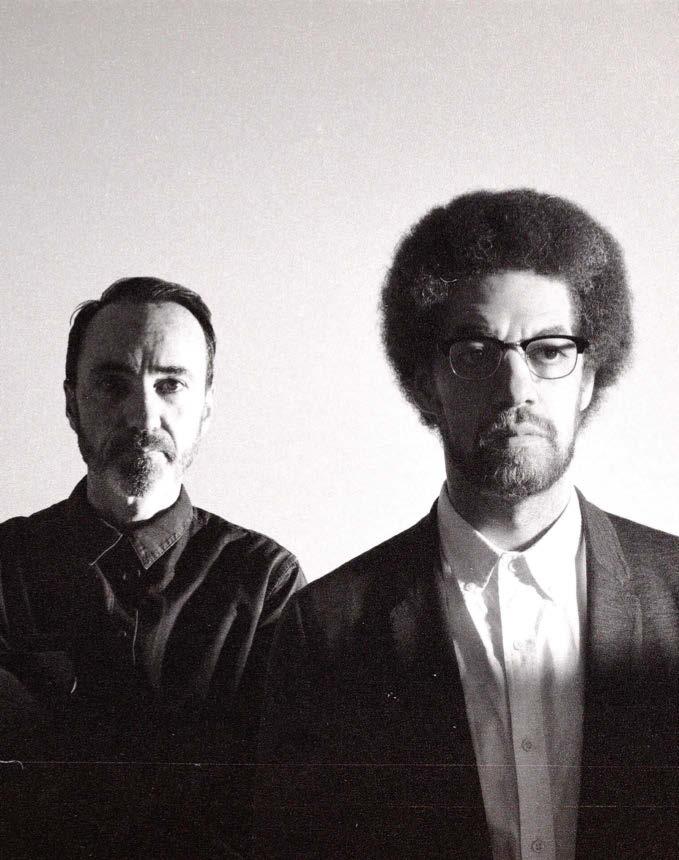
Scan to hear our Playlist podcast with Danger Mouse on Spotify

From
“This is a beautiful song [by former Byrds member Clark] about how, in a way, you get closer to people who can hurt you; in order to not get hurt more, you get under their wing. Musically, the song is a mix of country and gospel. It’s very soulful and has this real melancholy, soulful element that comes in. It’s just one of my favourite songs ever. If you don’t know it, have a listen.”

“I remember being on tour in Europe with some project when I first heard Phantom Limb I loved it. James [Mercer, his Broken Bells bandmate] has a melodic sense that’s so unique; he’s one of those people who, almost like The Beach Boys, can make a song sound so pretty and upbeat but still inject that melancholy into it. I don’t know what the lyrics are about. I don’t even want to know, so I can just make the song my own.”

“This song [by Australian rock band The Church] is one of my favourites of all time. I kind of wish I was a teenager when it came out, but I wasn’t – I was only 11 at the time. I almost feel as if I was going through a heartbreak when I first heard it, though. [Laughs.] It makes me feel that melancholy and nostalgia of being young and getting your heart broken. I love that era of music so much – it’s a big influence on me.”
“This is an epic cover of Burt Bacharach’s Walk On By that defined a whole feel and sound for me when I was in college. It combined the soul music my parents used to play, the hiphop feel that influenced me in my youth, and the Pink Floydsounding kind of psychedelic prog stuff I loved at that time. And it’s 12 minutes long. I love the intent of that – it’s an artistic statement. This was definitely a big one for me.”

is a living role model, not just another dead, ‘great’ white man”. The person he chose was Marcia Rigg, the civilrights campaigner whose brother Sean died in police custody in Brixton in 2008.
But not only is its subject alive, the monument itself is far from a static lump of stone or marble. Created using augmented reality and 3D scanning technology, Holding the Flame is a virtual statue of Rigg that stands outside the police station where her brother died in Canterbury Square. Using the Aswarm XR app and their phone camera, passers-by can ‘trigger’ its appearance.
“People have to make that statue appear – you’re part of the act,” says McIntyre-Burnie. “Every time someone downloads it, they’re reigniting the flame. You can walk around it as if it’s really there, and hear Marcia’s voice speaking her story.”
The AR artwork challenging our understanding of what statues can be
In June 2020, as the UK emerged from lockdown and Black Lives Matter protests took place worldwide, the statue of slave trader Edward Colston was toppled from its plinth in Bristol, sparking a fiery debate about the role of statues in modern society. At the same time, Thor McIntyreBurnie and his public arts company Aswarm were looking for a way to mark the 40th anniversary of the 1981 Brixton uprisings in south London.
“Statues were tumbling down around us,” says the London-born artist and director, “and we’d had the death of George Floyd piped
into our living rooms. We’d had our public space taken away [by lockdown] and now, in a way, it was being given back to us. It was an interesting time to look at statues and public space, and who those things are serving,”
Working with the United Family & Friends Campaign, a London-based coalition set up by families affected by a death in custody – police, prison or psychiatric – Aswarm seized the opportunity “to diversify what the role of a statue can be… to break history from stone, keep it fluid and alive”. McIntyre-Burnie wanted to create a statue of someone “who could be questioned and
Bringing history to life: the Aswarm XR app is your gateway to viewing the statue
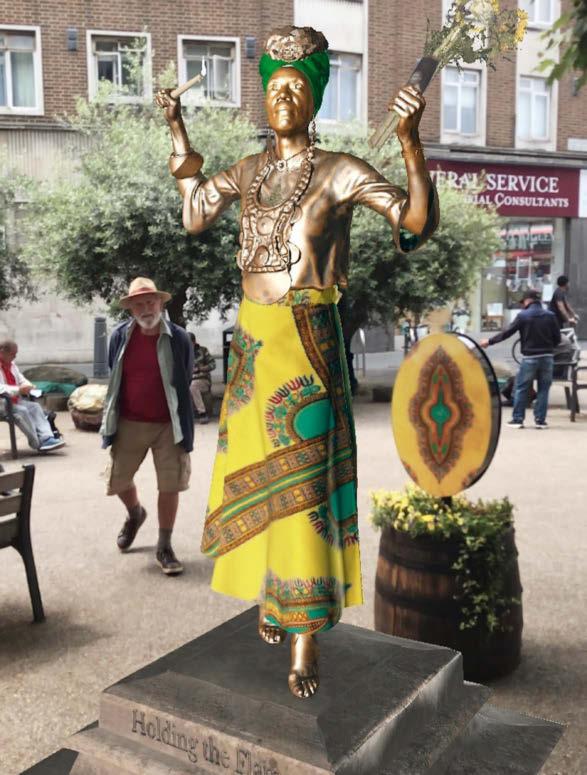
For McIntyre-Burnie, the year-long process of working with the Metropolitan Police and local authorities to create the statue was important: “As a father in a mixed-race relationship, bringing up a Black teenage boy in Brixton, I was touched by Marcia saying that growing up she never saw a statue that looked like her. I want my son to grow up in a city where there are statues that embody him or his mother. It’s also about venerating someone challenging the status quo.”
But what about the fact that an AR statue isn’t designed to exist for ever? “I think it’s OK,” says McIntyre-Burnie. “When you put something in a space for a while, you give people an idea of how that space can work. Then, by moving your piece, you’re sort of giving your space back to the public to do the next thing. Keeping that conversation alive makes it more powerful.”
Holding the Flame can be viewed in Canterbury Square, Brixton, until April 2023; aswarm.com


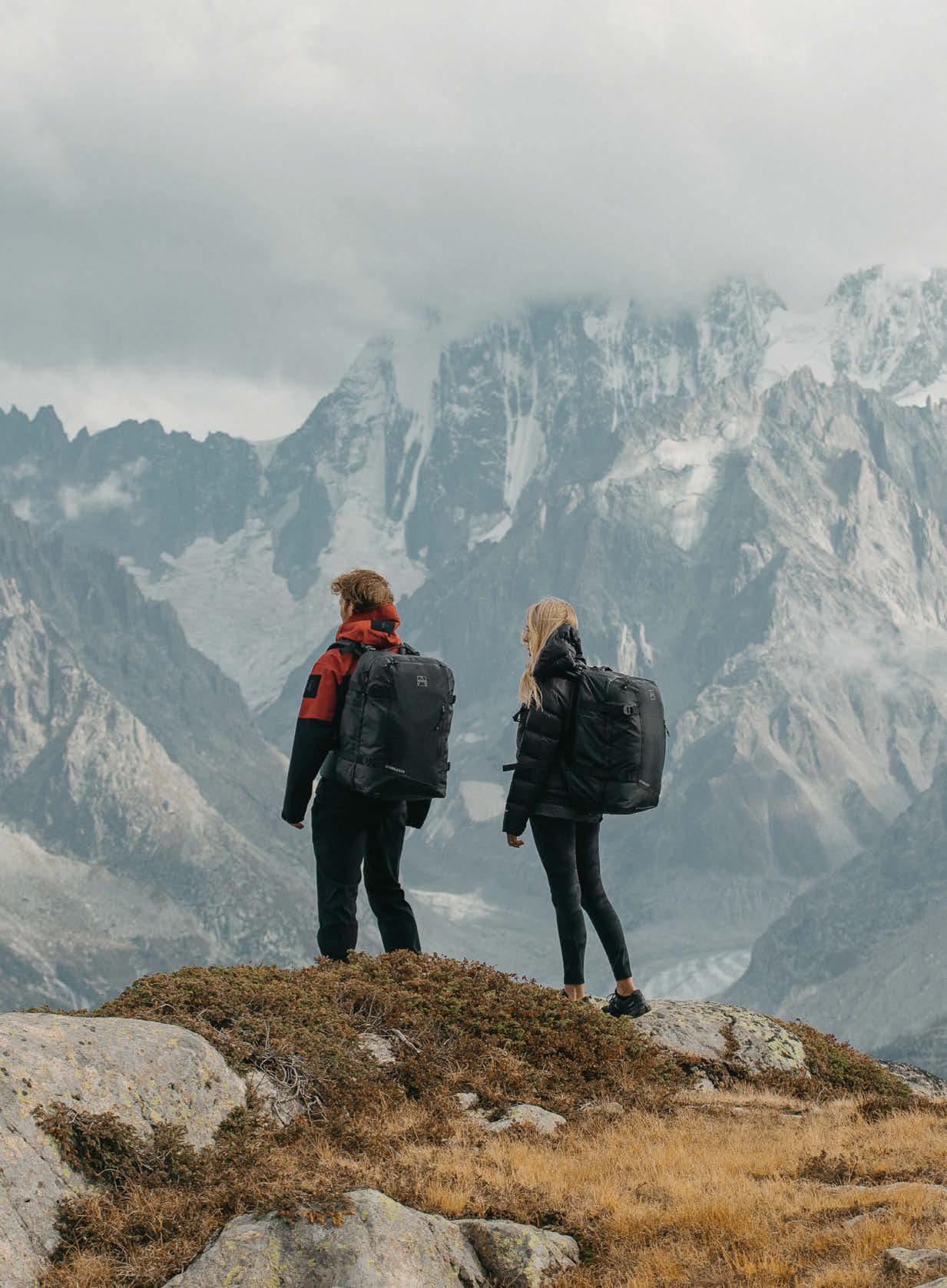
After having a baby during the pandemic, Madeline Gannon was conscious her daughter might be missing out on human interaction. So she turned to a different kind of companion – a robot named Ursa Major. Having constructed a swing for her daughter, Gannon built another so Ursa – a 1.3m-tall robotic arm originally created for light automation such as painting cars or sanding wood – could swing next to her. This might seem an unusual solution, but for Miami-based Gannon – known as ‘the Robot Tamer’ – robots are more than just machines. “These things might not be alive, but that doesn’t mean they can’t provide some level of comfort,” she says. “There’s this general fear about our relationship with technology, that we’re building our own obsolescence. I want to show that robots can enhance and augment our lives so they’re not just a source of anxiety.”
Originally an architect and now a researcher, artist and multidisciplinary designer, Gannon has become famous for blending art and science by programming robots with the autonomy to respond to their surroundings. Her work

has been exhibited at the Design Museum in London – her giant industrial robot, Mimus, could sense and interact with visitors – and she was commissioned to create Manus, a set of 10 robots programmed to behave like a pack of animals, for the 2018 World Economic Forum. “I give them the ability to see and understand the world around them, then I jump in the middle and interact with them like you would any other creature,” she says. “They just happen to be made of metal and motors instead of flesh and bones.”
Gannon’s first foray into working with robots after learning to program was a behemoth made by automation tech firm ABB for heavy industry. “The feeling and the risk of being face to face with this one-tonne beast of a machine is thrilling,” she says.
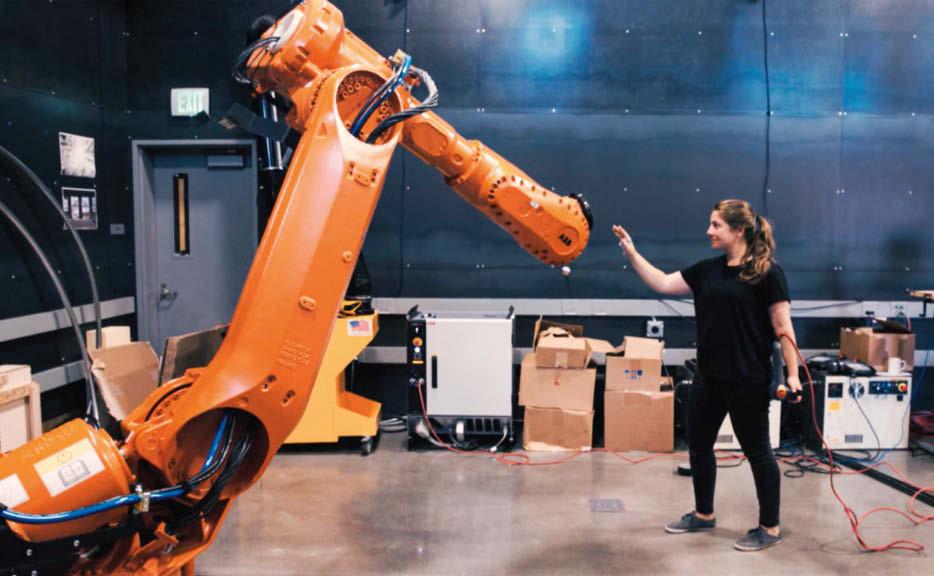
“I’ve been addicted to robots ever since.” Her most recent project at ETH Zurich university saw her ‘perform’ with 50 tonnes of industrial machinery usually used in car manufacture. “They do short repetitive tasks – it’s a very boring existence. So I make software that lets them improvise. I feed them agency until they start to surprise me, and that’s when I know I’ve found the right balance.”
Automatons can be our friends, says the US designer who has worked out how to tame even the biggest, most industrial machines
Right now, inspired by the FIFA World Cup, she’s teaching Ursa how to pass a football. “In the simulation, I can pass it a ball and it can hit it back,” Gannon says. “I can say if I want it on my head, shoulder, chest or leg. The next step will be to transfer the program to the physical robot, but Gannon has faith in Ursa: “The real challenge will be me hitting it back accurately!”
Ultimately, Gannon aims to show people what the future could look like if we learned to live alongside robots: “As an architect, I’m hypersensitive to how people move through space, and I’m giving these sensibilities to the robot. I’m not programming them, I’m convincing them. It doesn’t feel like I’m marching off into the future alone, because I have them with me to explore it.” atonaton.com
MADELINE GANNONIn the depths of the Alaskan winter, when temperatures fall to -20°C, artist Max Romey uses gin to mix his watercolours because water would freeze instantly on the page. “Painting in Alaska is not for the faint of heart,” he says. “But it’s a really cool conversation to have with the landscape.”
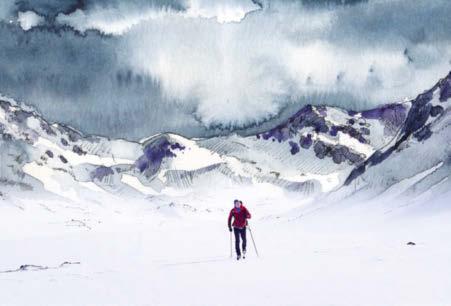
Romey’s home state is the largest in the US and also the most sparsely populated, with just 0.49 people per square kilometre. “It’s like Jurassic Park but with bears,” says the 28-year-old. “It feels like the last wild place on Earth.”
But in recent years Romey has seen this unspoilt environment engulfed by marine debris shredded on the harsh coastline. After years of travelling the world as a freelance filmmaker, he returned to Alaska for work and ended up


focusing on the pollution issue. “You almost have to be here to believe it,” he says. “You can’t walk the shoreline without crunching a plastic bottle. It’s ingrained in this landscape already, and it’s horrifying. It’s like finding worms in your cake.”
The extent of the problem was overwhelming, and Romey turned to art to help him communicate what he was witnessing. “I’m dyslexic and that’s been a big part of my life,” he says. “Reading and writing have been super-rough, but I can show you a picture and it just makes sense. Sketchbooks are wildly private, but as I’ve gone on I’ve realised they’re an amazing way to share my voice without words.”
Using his watercolours as a foundation, last year Romey made the short film If You Give a Beach a Bottle, his take on
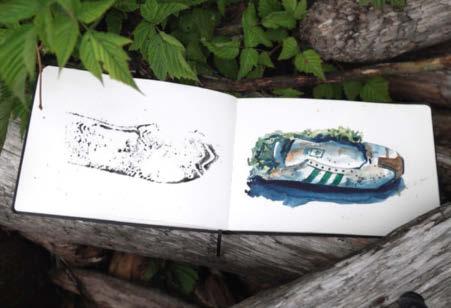

the pollution crisis. “I’ve got a perspective here that not a lot do,” he says. “I want to light the spark that catches other people’s imagination. The issue of marine debris is enormous. It feels like an ultramarathon; you can’t win this thing quickly, but if you keep on moving forward you might get there eventually.”
The filmmaker hopes his next project will resonate even more with viewers as he tracks the hundreds of shoes that wash up on Alaska’s beaches. “It’s arguably the most eerie thing you’ll find out here. The shoes are this little bit of humanity because you know somebody was in them. And these things are still making footprints. Around 20.5 billion shoes get made each year, and there’s almost no way to recycle them.”
Romey doesn’t let himself off the hook, either. “I’ve had maybe about a hundred pairs of shoes in my life up until now,” he says. “The whole goal of this film is: will I find one of my own shoes out there? [The result] will be a mix of Wes Anderson and David Attenborough.” Watch a teaser for Max Romey’s new flm at maxromeyproductions.com
Drawing the line: (above) filmmaker Max Romey; (top) scenes from If You Give a Beach a Bottle MAX ROMEYMeet the Alaskan artist and filmmaker who’s using his talents to turn the tide of ocean pollution

think I’ve ever played at such high focus levels for so long. Everything felt like it made sense. It’s like a drug when you’re able to experience it –it brings you to another level. You’re not playing with your skill any more, you’re playing with your soul.
Can you find your flow whenever you want?
Words TARA BROCKWELL Photography ANTOINE TRUCHETGreek tennis ace Stefanos Tsitsipas first picked up a racket at the age of three, and now, at 24, he’s one of the sport’s most credible contenders. Last February the world number six celebrated his 200th tour-level win; two months later, in his adopted home of Monte-Carlo, he joined the select set of players who have successfully defended an ATP Masters 1000 title. Plus he has an Instagram account dedicated to his perfect hair (apparently the secret to his flowing locks is Greek oregano).
But, as January’s Australian Open looms, there’s no time for Tsitsipas to rest on his laurels. As a three-time semi-finalist in the tournament, the Greek is hungry for a win. And this, Tsitsipas tells The Red Bulletin, will all come down to mental magic.
the red bulletin: What’s your most significant mental strength? stefanos tsitsipas: Patience. I think this is something that this generation lacks. Especially with social media, they’re very impatient and want everything done right here, right now.
Have you always been a patient person, or is it a skill you’ve honed?
I was a pretty hyper kid, but I learned with time to become slowerpaced, to think about my intentions. It’s important to know when to let go, to reflect, and to appreciate the small things you’ve been able to contribute to what you’re trying to do, even if it’s [only] adding one per cent. Some people want big results
too soon. Of course, sometimes it’s difficult to manage that and be consistent in that kind of mindset, but in difficult moments I remind myself I’m here for the journey, not the destination.
How does patience improve your game on the court?
There were two times when I found myself in the same situation with the same opponent, but [it was] a different Stefanos each time. The first time I faced Rafael Nadal at the Australian Open in the semifinals [in 2019], I was really impatient. I remember thinking, “OK, I’m playing against one of the best. I really need to prove myself with big shots and go for it.” [He lost to Nadal in straight sets.] Two years later, I faced him again at the same tournament, this time in the quarter-finals. After going two sets down, I understood what I was doing wrong. I remember coming to an agreement with myself, saying, “OK, you’re going to become patient. You’re going to wait. You’re going to spend every single minute on the court enjoying the play and just make it a fun game.” It turned out to be one of the best comebacks in my career so far. [Tsitsipas fought back to take a surprise victory in five sets.]
How did that performance feel?
How can I describe it? It felt like I was in a cage and someone decided to unlock it. I suddenly felt free. Every decision I went for felt right. It’s what I like to call flow. I was able to reach that flow by decreasing my expectations. It was a pure fight. It was all mental. It was excruciating, physically and mentally – I don’t
I had this conversation with my mental trainer: how can we get into that flow state more often? The answer, surprisingly, is that you just have to let go. You can’t think you want to be in the flow state, or you’ll never reach it. It happens gradually, it builds up. It’s a climax you reach when you stop overthinking and just act, using more of your instinct.
How much of your game is mental as opposed to physical?
I haven’t lost many matches because of my physical condition; most have been because of the things going through my mind. Physically, many players are at the same level. I think [the difference] has to do a lot with mental preparation. You need food for your body to be physically fit, but also food for your brain to be mentally fit. Tennis is a very mental sport.
Do you have a mental goal?
To be the most positive guy on Earth, I guess. I have my days when I’m a little bit negative – I think we all do.
Can you always remain that positive as a competitor?
That’s a tricky question. Criticism is important – I like receiving it. When I was younger, I was very sensitive to it, but as I’ve got older I think it’s essential. It’s the only way you can achieve perfection. I mean, perfection doesn’t really exist, but you can get close. That also comes with your attitude to what you do. If you do it with love and care, if you wake up every morning and do the best things to succeed in what you do, with people who are chasing that same dream, anything is possible. With your mind, you can achieve everything you want in life. That’s where it all starts. It all starts with an idea.
Instagram: @stefanostsitsipas98
When the Greek tennis professional wanted to uncover the secret of winning, he discovered the answers were all inside his head

“In the flow, you’re not playing with your skill but your soul”
It’s impossible to pigeonhole Mykki Blanco. The non-binary performer (who uses the pronouns they/them) is a poet, performance artist, activist and musician who fuses a wide range of influences – including punk, grunge and trap – with rap to create unique, mould-breaking hip-hop tracks. The 36-year-old Californian, born Michael Quattlebaum Jr, has collaborated with everyone from Kanye West to Madonna, and their own DIY work ethic has played a large part in their success. But it has taken a decade of being in the spotlight for them to feel able to speak their truth through music.
the red bulletin: Your latest album is titled Stay Close to Music. What was the thinking behind that name?
mykki blanco: I didn’t start songwriting until I was 25. Now, to be able to write songs and be paid to have people listen and see you perform, that is a gift! What is life but a series of joys and struggles?
When I think about what’s happened in my life, when I was diagnosed with HIV [in 2011], when I had struggles with drugs or alcohol, when at the beginning of my career I faced a lot of taboos and a lot of homophobia and transphobia, and when I think of what it is to be a queer person of colour in this society… I went through all these various forms of intersectional oppression. I decided to call this
album Stay Close to Music as I found that, no matter what I’ve been going through, I wake up and I say, “No matter what’s going on, I’m gonna get up, have my coffee, maybe go for a quick run, and then I’m gonna write songs, and that’s my job.” That’s a gift.
You’ve worked with some of the world’s best-known music artists. But how did you get started?
I didn’t have a record label until recently, and [I never got a] mainstream push, so one of the things I had to do was play a lot of concerts. It’s the classic way of getting your name out there, like Sam Cooke and Elvis did. That’s how you build the fanbase. The birth of Tumblr and social media networks allowed me to grow my career, as people all over the world could say, “Hey, we want a Mykki Blanco show in Paris, in Sweden, in Cape Town, in São Paulo.” And I would go. I toured relentlessly. When I look back at the number of shows, it was psychotic! But we wouldn’t be sitting here now if I hadn’t done that.
After spending so much time on the road, where do you call home?
I don’t have a flat right now, but I was living for a bit in Portugal up until 2020, then I went to Paris, then I lived in LA for a few months, but I was still spending the majority of my time in Europe. I pretty much tend to live all over Europe; I’m not sure where my next country will be, but I connect more to the European lifestyle. Plus, there is something that happens when you’re in a place where you don’t speak the language: I get to be in my head, be more in
my imagination. Maybe I’m able to deal with myself when I’m not taking in this external stimuli [of conversation], and I think that influences my songwriting.
You’re well-known as a queer Black artist who has long played with drag and gender presentation, and your chosen pronouns are now they/them. How is your identity reflected in your music?
I have always tried to highlight queer narratives that I’ve lived but I don’t feel are promoted in the mainstream. In the mainstream media, we’re fed this palatable idea of what it is to be queer – this clean-cut, whitewashed idea; a queerness that plays by heterosexual rules. There are queer people who, in their authenticity, fit into that way of being, and that’s fine. But, for most of us, that’s not true to our lived experience. In my own trans journey, I was always a gender-nonconforming person. I was always a target, highly visible yet invisible at the same time. Yes, things have got way better, but still you’re a target.
How does it feel to put so much of yourself into the public realm?
[In the future] I will try to be more and more honest in my songwriting, because I’ve realised people don’t need to come to Mykki Blanco for just a feelgood dance song any more. I’m able to be multidimensional, and maybe people will value me more when I can give more sides of myself. That was not always so easy; it took years and a lot of different processes of songwriting: “Can I say this? Am I comfortable with this?” It’s taken me years to be comfortable with that kind of vulnerability. I was 25 when I wrote my first song, and now I’m 36 – it has taken 10 years for me to build these skills. If I’d started at the age of 15, maybe I would have been a more mature songwriter by 25, but I didn’t – that wasn’t my story, wasn’t my trajectory. Everything feels very organic. It feels like it’s happened right on time.
Mykki Blanco’s latest album, Stay Close to Music, is out now; mykkiblan.co
The American hip-hop artist and activist writes songs from a perspective rarely heard in mainstream music. But telling their truth didn’t come easy
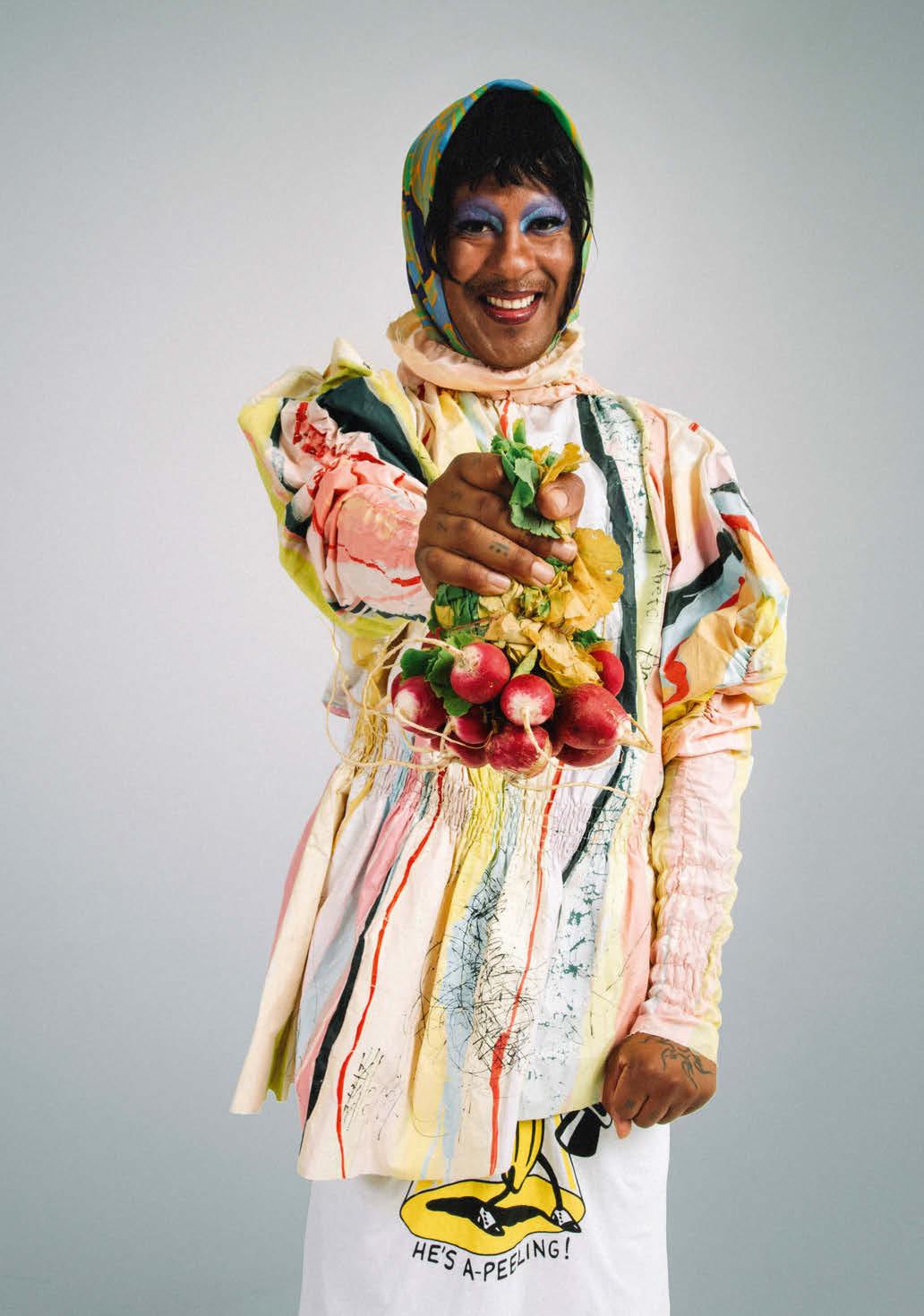
“We’re fed this palatable idea of what it is to be queer”
The 42-year-old singer-songwriter on the strangeness of heading back to high school to see her life story turned into TV fiction
Words LOU BOYD Photography MICHELLE FAYETegan Quin is used to sharing her life with the public. The singersongwriter is one half of successful Canadian pop act Tegan and Sara, which she started with her identical twin sister in 1995, writing about small-town life in Calgary, Alberta. The duo won international success by the age of 15; they had a record deal before their 18th birthday.
From their very first song, Tegan Didn’t Go to School Today, Tegan and Sara’s songs have been intensely autobiographical, sharing their most private thoughts and feelings, so it made sense when, in 2019, they published a successful memoir of growing up in the ’90s. “It feels like you know everything about me, and that’s my job,” says Quin. “Because Sara and I have shared so much about what it was like to grow up together, people feel really close to us.”
Now, Quin is sharing her life once again in the Amazon Freevee TV series High School, a fictionalised coming-of-age comedy written in collaboration with actress/director Clea DuVall. The series, which stars real-life twins Seazynn and Railey Gilliland, follows a year of the Quin sisters’ adolescence as they discover music and explore their identities and sexuality (both Tegan and Sara have openly identified as queer since the start of their careers).
Here, Quin (pictured opposite, left, with Sara) speaks to The Red Bulletin about fictionalising her own life, the importance of centring queer narratives, and how she hopes the TV series will correct people’s assumptions of what it means to be a twin.
the red bulletin: Were you nervous about allowing your life story to be fictionalised? tegan quin: We clearly feel compelled to share stories about ourselves. I think the discomfort we sometimes feel in revealing our personal lives is worth it. There are so few stories like ours, so few queer stories that get told, especially when you really look at the intersection of being queer women and creatives and songwriters. We so rarely see stories about women being creatives. It felt important and worth the risk.
Was representing a queer female story one of the driving forces? Yeah. I love a lot of the queer TV coming out, but some of it – especially what’s aimed at adolescents and teens – feels a little neutered. I feel like this show is more real. It’s like a group of friends hanging out in the ’90s, figuring out who they are.
You went back to your old high school in Calgary to shoot the series. What was that like? Surreal. It was so weird to watch the monitors and to see our story play out in front of us. The biggest mindfuck, though, was thinking about what dirtbags we’d been at school. I don’t think anyone expected much of us, but now we’ve had a very successful career and we’re back in Calgary filming this show based on our lives.
You found Seazynn and Railey on TikTok. Were you nervous to cast sisters with no acting experience? I think people thought we were crazy for suggesting it. We saw the twins on the app, and it just felt right. They worked so hard with an
acting coach and trained in music, and they’ve amazed everyone with their performances.
Do you recognise yourselves in the characters they’ve created?
Sara and I were very verbose and hyperactive, quite extroverted and outgoing in high school. I feel like Railey and Seazynn’s performance shows more of our internal world. I see so much of how I felt on the inside, how I was privately struggling. Railey and Seazynn brought so much of themselves into their roles, and Clea [DuVall] and Laura [Kittrell, scriptwriter] put parts of themselves in there, too. Because of that, I never felt like I was watching myself. It was easy for me to disconnect and just watch it as a beautiful story about girlhood and adolescence.
The show confronts misconceptions not only of the teenage queer experience but also of what it means to be a twin. How have such assumptions affected you?
We’ve spent our entire career correcting myths and misconceptions about what it’s like to be twins. There’s the stupid stuff that people ask, like, “Can you read each other’s minds? Can you feel each other’s pain?” And there’s the fact that everybody thinks we’re best friends and we get along all the time.
What was it like to work with another set of identical twins? Meeting Railey and Seazynn was so good because I’d never been friends with other identical twins before. So much of what they said was just like me and Sara. They love each other, they do everything together, and yet they still struggle with that pull to be their own person. High School is a beautiful, nuanced portrait of what it’s like to be a twin, and I think it’ll resonate with people. You don’t have to be a twin to know what it’s like to feel lost in a crowd or next to those you’re closest to. Everyone knows what it’s like to feel overshadowed. High School is available to watch on Amazon Freevee (via Amazon Prime) now; teganandsara.com

“There are so few queer stories that get told”

At just 18, Scottish freeskier KIRSTY MUIR has the world of winter sports at her feetand not only because most of her professional life is spent in the air. Having started out far from top-rated resorts, the Olympian proves that hard graft, vision and a well-chosen soundtrack can take you to dizzying heights
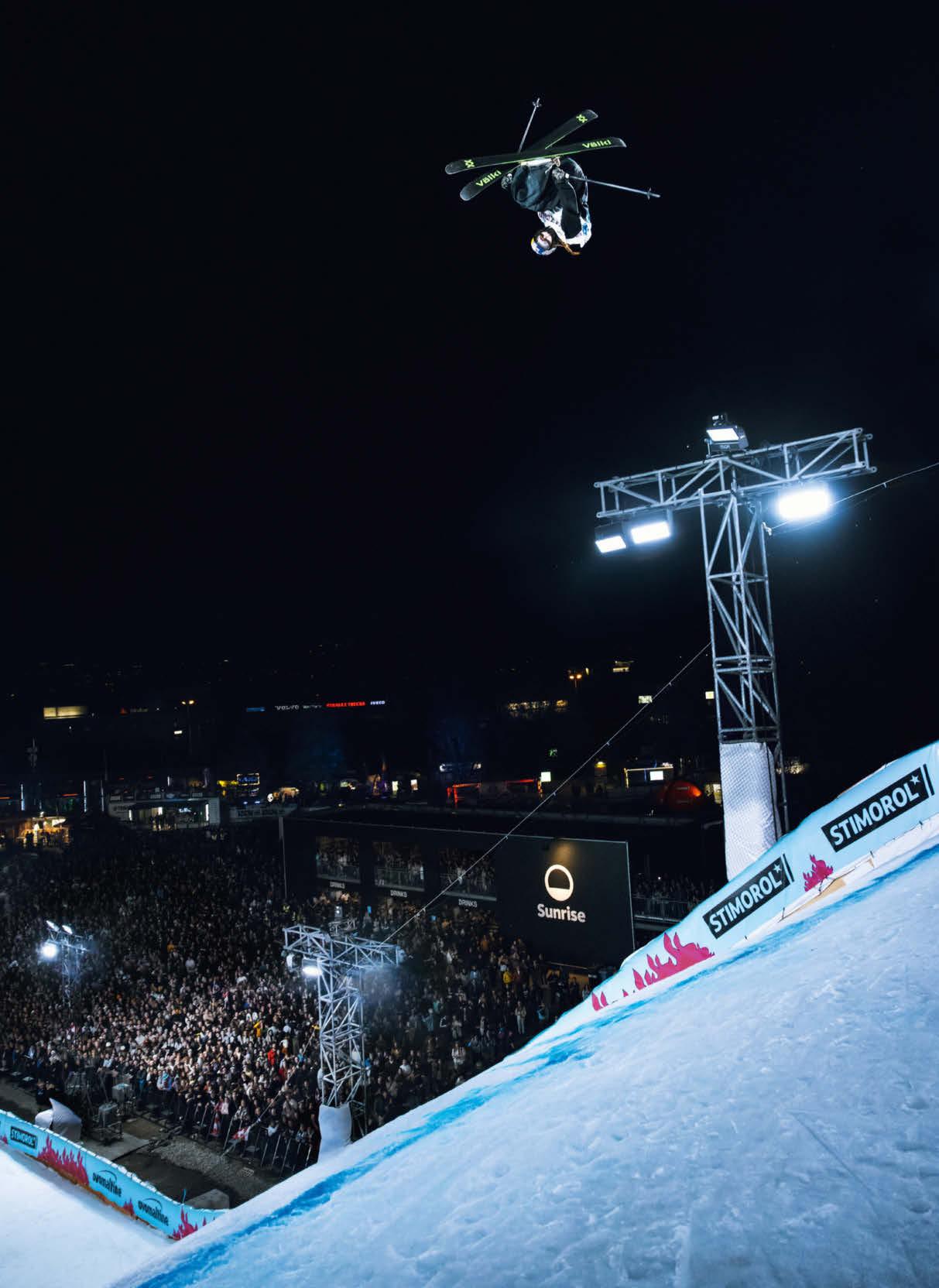 Words TRISTAN KENNEDY Photography DAN CERMAK
Words TRISTAN KENNEDY Photography DAN CERMAK
Tall order: at 42m high, the jump at Big Air Chur is a challenge for any skier
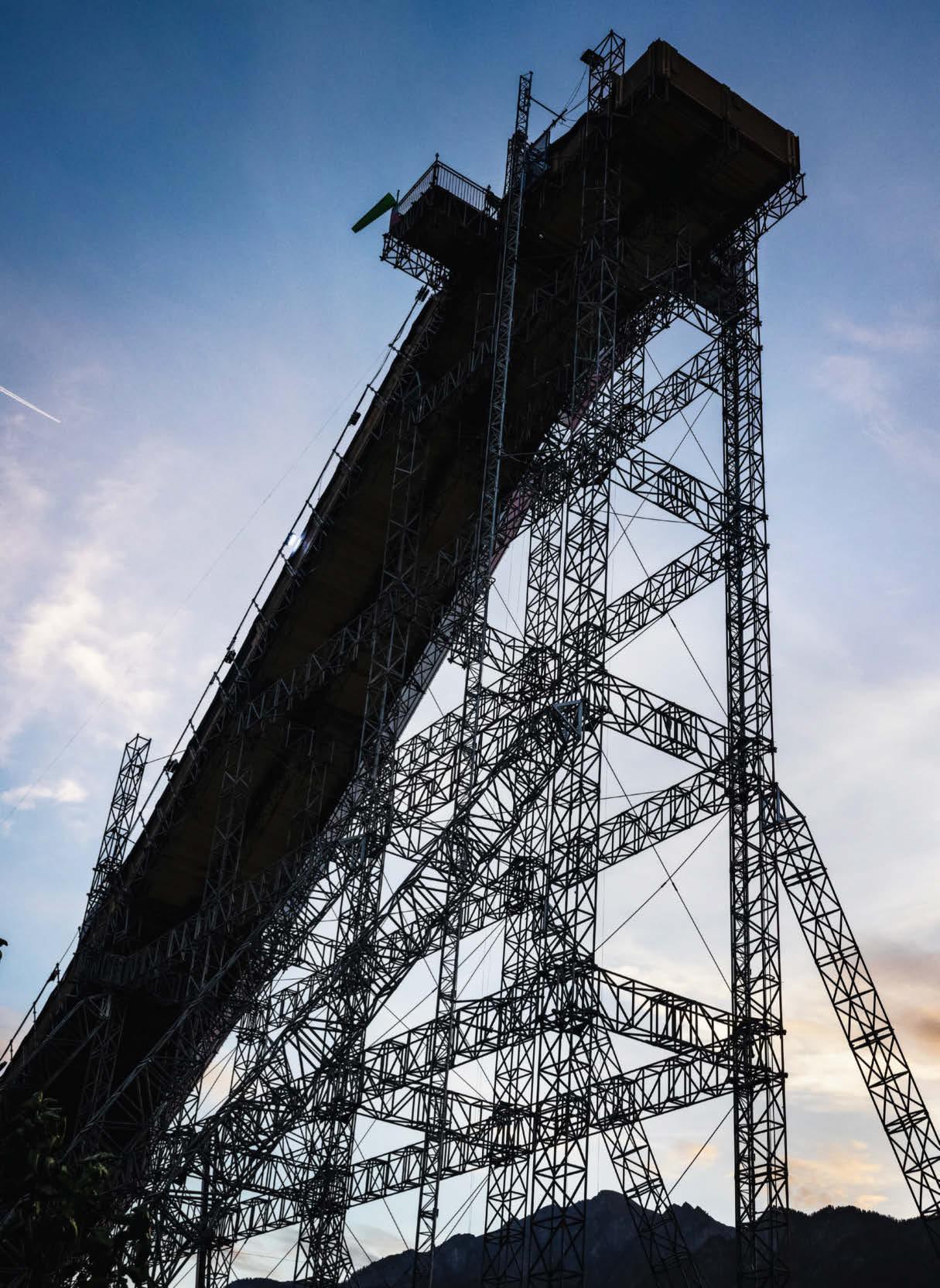
t the top of a tower of scaffolding, 42m above the concrete of a Swiss car park, Kirsty Muir is getting ready to jump. Bouncing slightly from side to side, like a boxer preparing to throw a punch, she jerks her head back and to the left, practising to the last moment the movement she’s about to make in the air. Then, with her headphones blocking out the roar of thousands of expectant fans below, the pounding drums of The Pretender by Foo Fighters kick in. Without hesitation, Muir launches her skis down the narrow strip of snow sloping down from the 14-storey structure, gathers speed, and catapults herself into the sky.
AThis is big air, a discipline in which freestyle skiers such as Muir showcase their best tricks over a single, enormous jump. On a set-up this size, they can expect to hit the peak of their parabola 8m above the flat ‘table top’ of the jump – roughly the height of two double-decker buses – fly for a distance of around 20m (as long as two double-deckers back-toback) and reach speeds of up to 45kph.
The flight from the lip of the jump to the landing lasts two-and-a-half seconds. But with a skier as skilled as this 18-yearold, these instants seem to stretch as she unleashes the biggest trick in her arsenal: a double cork 1260. Spinning on two axes simultaneously, she completes

“Women’s skiing has progressed so much. The dream for me is to help push the sport along”
three-and-a-half full rotations and goes upside down twice before skiing down the landing – which at 38°, is as steep as most black pistes – backwards.
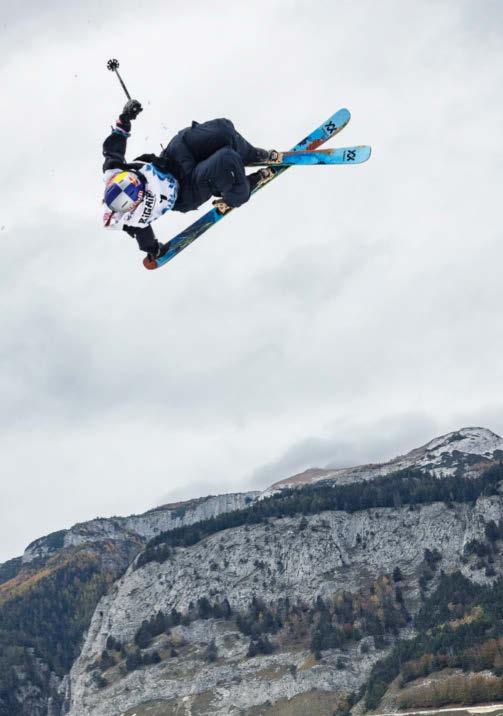
The physics of this feat are mindboggling. But it’s made all the more impressive by the fact that this artificial scaffold is far harder to ride than any normal ski-resort set-up. To create a ‘real snow’ jump like this in the middle of a town, the organisers of Big Air Chur – the first World Cup contest of the winter –use crystals of ice instead of snow. These last longer in the warm October weather, but they can freeze into ridges, making both take-offs and landings even trickier. Muir’s presence here, at the pinnacle of her sport, is almost as incongruous as the jump itself. Most of her fellow competitors, from Norway, Canada, Austria and France, have grown up riding actual snow on proper mountains. Muir is
from the UK, a nation not renowned for its winter-sports prowess, and grew up skiing on a dry slope in Scotland.
There’s no denying she deserves her place at the top table, however. Having landed her double cork 1260 – equalling the biggest trick landed by any female athlete all day–- she qualifies for the eight-woman final at Big Air Chur with ease. And the result is no fluke; Muir hasn’t finished outside the top 10 in a World Cup contest since the start of last season. In February, at the age of just 17, she finished fifth as big air made its
debut at the Winter Olympics in Beijing and, a week later, went toe-to-toe with the best in the world again in the Olympic slopestyle final, taking eighth. When the Games come to Italy in four years’ time, there’s every chance Muir will make history as the first British skier ever to win gold. But how did an unassuming teenager from Aberdeen become world-class?
“I started skiing pretty young,” says Muir over the phone a few days before the contest in Chur. “I was three, almost four, when my parents took me on the dry slope.” Her father Jim, who spoke to The Red Bulletin from Aberdeen where he works as a chemist on offshore oil rigs, and her mother Kim were both keen recreational skiers. “When the kids came along, we wanted to get them into skiing as soon as possible,” Jim says. The dry slope at Garthdee, near the family home, proved the perfect place to start.
Originally built in 1967 and known locally as Kaimhill Ski Slope, Adventure Aberdeen Snowsports Centre had fallen disrepair in the ’90s and eventually shut in 1996, with some of the land sold to Asda. But then, in 2004, the year Kirsty was born, it was reopened by the council. And crucially the slope was resurfaced not with Dendix – the scratchy, diamondpatterned matting that covers most of the UK’s ’60s-era slopes – but with a new material called Snowflex.
While neither feels much like real snow, Snowflex comes with a layer of padding underneath, which makes learning to jump, and falling over, significantly less painful. By the time Muir started skiing lessons, a surprisingly vibrant freestyle scene had developed at the slope. “I went to the Saturday kids’ club, where the majority was [normal skiing] technique,” she says. “But for the last 10 minutes of every session we got to go on the freestyle slope. The coaches could see how much I loved it straight away.”
nitially, skiing was just one of many activities that Muir and her siblings – older brother Jimmy and younger sister Fiona – tried out. But by the time one of her instructors, Andy Begg, encouraged her to join in his Wednesday freestyle sessions, she knew it was her favourite sport. “I had to choose whether to continue dance classes on Wednesday nights or start freestyle, and I was like, ‘I’m going skiing, I’m going skiing!’” Muir says. Her father recalls that “the dance teacher was really disappointed, because
“After the Winter Olympics, I really was buzzing”
Fever pitch: Big Air Chur attracts one of the biggest live audiences in skiing –12,000 attended the October 2022 event. Unfortunately, this time around, Muir missed out on a podium place


she was good at it”. But her parents were supportive. On weekends when the notoriously fickle Scottish weather played ball, the whole Muir family would wake up early to drive to the Highland resorts of Glenshee or The Lecht. “If there was snow, our car would always be the first in the car park,” says Jim. Muir, in her favourite pink ski outfit, her bright red plaits poking out from beneath her helmet, was always raring to go.
But the odds were still stacked against Muir becoming an elite winter-sports athlete. As vibrant as the local scene was, a dry slope next to an Asda car park is a far cry from the alpine resorts where most of her competitors learned to ski. Dry slopes, despite the name, must be sprayed with water constantly, quickly leaving skiers soaked through. On dark Aberdeen evenings, they’d do well to get two hours in before the cold and wet became too much.
Skiing in the Highlands, meanwhile, can be wonderful, but the weather is famously changeable. “When I coached Kirsty and the dry-slope crew in the mountains, I mainly taught them how to ski on heather, how to avoid rocks, and when to take hot-chocolate breaks because it was raining,” recalls Begg, laughing. On the bright side, Muir says, at least she learned to ski in all kinds of conditions: “The first time we went to the French Alps [as a family] we were the only ones on the hill, because of how windy it was. But we were still stoked to be out there, ’cos it was just like Scotland.”
Muir’s determination to make the most of the resources available to her has undoubtedly played a role in her success, say her coaches, but perhaps even more important is her methodical approach. She’s always had
an innate ability to appraise “the risk/ reward ratio,” according to Jamie Matthew, head freeski coach at GB Snowsport, the UK’s Olympic governing body, who first met Muir when she was 10. “It wasn’t so much that she had no fear, but she could rationalise stuff a lot better than other kids,” he says. “She understood the methodology of practice, and she got stuff that a lot of kids her age wouldn’t understand – even stuff that a lot of the more mature athletes wouldn’t necessarily get.”
Muir also had an impressive work ethic from a very young age, according to Joe Tyler, another coach who’s been instrumental in her development. Her father agrees. “She was just so dedicated, you could tell she loved it,” he says. “She was dedicated, she worked hard, and she was brave.” It’s perhaps this last trait that really set her apart. Given the choice, her coaches say, Muir would always hit the biggest jump, ignoring any evolutionary instinct of self-preservation to push herself further, higher, faster.
In 2018, at just 13 years old, she won all three freeski events – big air, slopestyle and half pipe – at the national championships, known as The BRITS, against a star-studded field of much older competitors. Two years later, when she was finally old enough to join GB Snowsport’s World Cup team, she made a splash straight away. “Her first World Cup was an inner-city big air in Italy that was hella sketchy,” says Matthew. “I remember speaking to Joe [Tyler] –he had to pull her back and say, ‘Look, I know you want to do your hardest trick, but that’s not a wise idea right now. Being here is enough.’”
For Muir, however, it wasn’t enough. “Even though the conditions were sketchy, the jump wasn’t great and the snow was absolute trash, she was like, ‘No, I want to do my hardest stuff,’” says Matthew. In the end, Tyler talked Muir down, and even with her easier trick she finished a credible 13th. “But that drive and determination…,” Matthew adds. “There were a million and one reasons for her to back down. She could have

“Music

“I don’t see any reason why she couldn’t win whatever she wants”
Henry Jackson, snow sports commentator
used any number of excuses, but she didn’t. It was the opposite. And that’s definitely not usual.”

Despite her laser focus on progression, in person Muir is about as far from a competition robot as you could find. At a café in Chur the day before the competition, she’s dressed in the grungeinspired uniform of today’s teens – huge baggy jeans, and a hoodie reaching halfway down her thighs – and beneath the Red Bull cap, pulled low over her auburn hair, there’s a ready smile.
This has, she says modestly in her soft Aberdeen accent, been quite a big year. In April, she turned 18. In July, she finished school, having taken two years to do her final exams because of all the time off for skiing. (She aced them, according to her dad, despite having to study on the road.) On snow, too, “last season was a season of firsts for me,” she says. There was her first Winter Olympics, of course, but she also earned invitations to the Dew Tour, The Nines, and the X Games –the most prestigious events in the freeski calendar, to which only a select few are given a golden ticket.
“After the Olympics, I really was buzzing,” she says. “I was very emotional and overwhelmed. And having seen the other girls sending some really insane tricks that haven’t been done lots in our sport… I was stoked to come fifth. The level of women’s skiing at the moment is so high. The progression has been really significant. That would be the dream for me – to help push the sport along. Hopefully this year I’ll get some new tricks down and we’ll see.”
As the professional milestones have racked up, Muir has grown in confidence personally, too. “I was definitely quite a quiet, shy person initially when I was on the circuit,” she says. “But I think in the last year I’ve become just a little bit more confident in myself. Not just my skiing, but in building friendships on the scene and stuff, being a part of the girls’ group.” These days, by all accounts, Muir is the life and soul of the party. “I still love dancing – I love doing the Worm,”
she laughs. Music has helped her on the slopes, too, calming the contest nerves as she lines up for a big jump. “[I started listening to tunes] in the last year and a half,” she says, “because I was very uptight in competitions, and I felt like music could help me relax more. Now, I listen to it all the time.”
The recent boost in Muir’s confidence has been obvious to her friends and coaches, too. “It’s like she almost needed the Olympics and a brand like Red Bull coming along to be able to square it away in her own head that, ‘Oh, I’m actually pretty good at this, I can do this,’” says Matthew.
Those who watch the sport closely now believe Muir can go all the way. “She got a fifth and an eighth at her first Olympics at 17,” says Henry Jackson, the TV commentator who has presented most of the biggest events in freestyle skiing and snowboarding for the past decade and has watched countless talented kids come through. “Next time she’ll be, what, 21 and physically a little stronger? I don’t see any reason why she couldn’t win whatever she wants.”
Back on the concrete in Chur, her eyes shining and adrenaline pumping, Muir is preparing to jump in the nighttime final. Watching this competition makes it easy to understand why athletes like her need strategies to help them focus and relax; this event – a mix of music and action sports –attracts one of the biggest live audiences in skiing. Competing here, you’re part athlete, part rock star. Over the course of the afternoon, a 12,000-strong crowd has gathered around the base of the jump and the Glastonbury-sized stage set-up to the left of it. Later in the evening, veteran US rapper Busta Rhymes will close proceedings with a hit-packed set, but the festival atmosphere has started early: Berlin-based rap trio KIZ are already whipping the audience into a frenzy as Muir and the skiers warm up. Huge circle pits form, with beanie-clad kids cannoning into each other every time the beat drops. Plastic cups of beer explode into the night sky as the MCs exhort the crowd to “jump, jump, jump”.
As excitable as the crowd is, there’s no doubt that the skiing – which starts with an audible blast of flame from pyro cannons built into the scaffold –is the main event. Local hero Mathilde Gremaud gets the biggest cheers, with
“Last season was a season of firsts for me”
have placed her among thefreeskiing elite

Swiss flags fluttering every time she drops in. But fans hold handwritten cardboard signs aloft for others, too. At the front, Lena Bianca from Corvatsch – a ski resort 80km south of Chur – is shouting herself hoarse for Muir. “I love her, she’s so amazing,” she says.
In the final, skiers are given three runs but must do two different tricks, and then the scores for their two best efforts are combined. Muir has spent the practice period concentrating on her second trick, an inverted 900° spin that involves skiing off the ramp backwards and is known as a switch bio 9. Frustratingly, it hasn’t felt perfect yet, she says. This means she hasn’t had time to try her double cork 1260 again since the morning’s session.
In the intervening hours, there’s been a dip in temperature, a few drops of rain have fallen and some lumps of ice have
hardened. Muir knows these small changes could make a big difference to her calculations of speed. It doesn’t help that, after she qualified, she fell attempting the double cork 1260 a second time – a mishap she blames on a musical mix-up. “For some reason, they took longer than normal to give the score to the girl ahead of me,” she says. This meant she mistimed pressing play on her headphones. “There’s about 10 seconds of quiet at the start of The Pretender, so I didn’t have the good part of the song, I didn’t feel good, and I rushed the take-off.”
It’s tempting to read into Muir’s choice of song for these crucial moments. The Pretender’s defiant chorus, which asks, “What if I say I will never surrender?”, could easily be taken as an affirmation of the determination that’s got her here, even in the face of such setbacks. In actual fact, she says, she’s picked it more
for the music than the lyrics; the driving drums and distorted guitars are exactly what Muir needs to get herself amped up as she enters the arena.
There’s something gladiatorial about the scene as Muir and her fellow skiers crowd into the narrow lift that carries them to the top of the scaffold, high above the hyped-up crowd. Bouncing on her skis, she rehearses that jerk of the head, drops in, and just fails to hold onto the backwards landing of the double cork 1260. Ahead of Muir’s second attempt, Matthew, standing with her at the top of the ramp, suggests she should try going bigger. She needs no encouragement. This time, she flies miles down the landing, only to go down harder. The sound of 12,000 people groaning in sympathy is audible as her skis fly off in different directions and she slides down the icy landing on her front.
Even though she has a third run, without two scores Muir won’t reach the podium at this contest. Worse still, the fall has left her hurt – she lifts her jacket to reveal where the artificial snow has scraped the skin off her stomach. Yet even though this last jump is meaningless from a competition point of view, there’s no question of her pulling out. As Alison Robb, the GB Snowsport physio, applies plasters to her wounds, Muir smiles. “It is what it is,” she says. Then she heads back into battle.
In the aftermath, Muir is welcomed with hugs from her fellow freeskiers. Everyone knows that at this level of competition the margins are minuscule. Had she landed her tricks, as she did earlier in the day, Muir would almost certainly be in the medals. What’s more important from her point of view, however, is the fact that she’s competing with these girls as friends and equals – not a pretender to the throne, but a queen in her own right. Behind her, in the crowd, Lena Bianca shouts, “Kirsty, I love you!”
She may have a lot still to do, but Kirsty Muir has nothing left to prove. Instagram: @kirski12
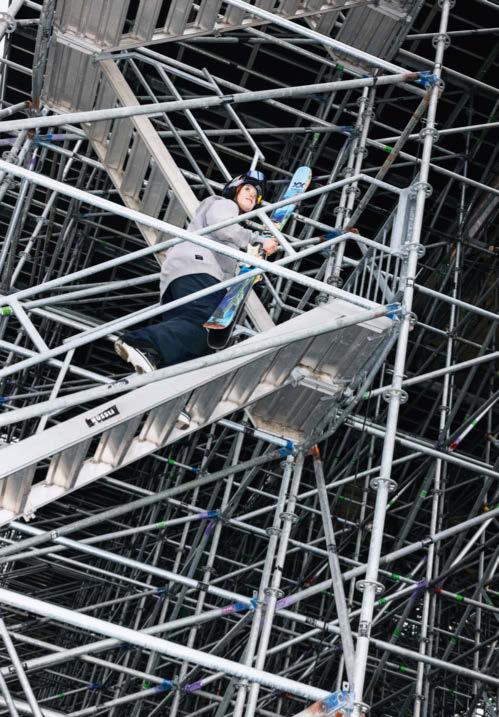 Giant steps: Muir makes the long and winding climb up the metal scaffold for one of her three runs at Big Air Chur
Giant steps: Muir makes the long and winding climb up the metal scaffold for one of her three runs at Big Air Chur
“The level of women’s skiing is so high right now”
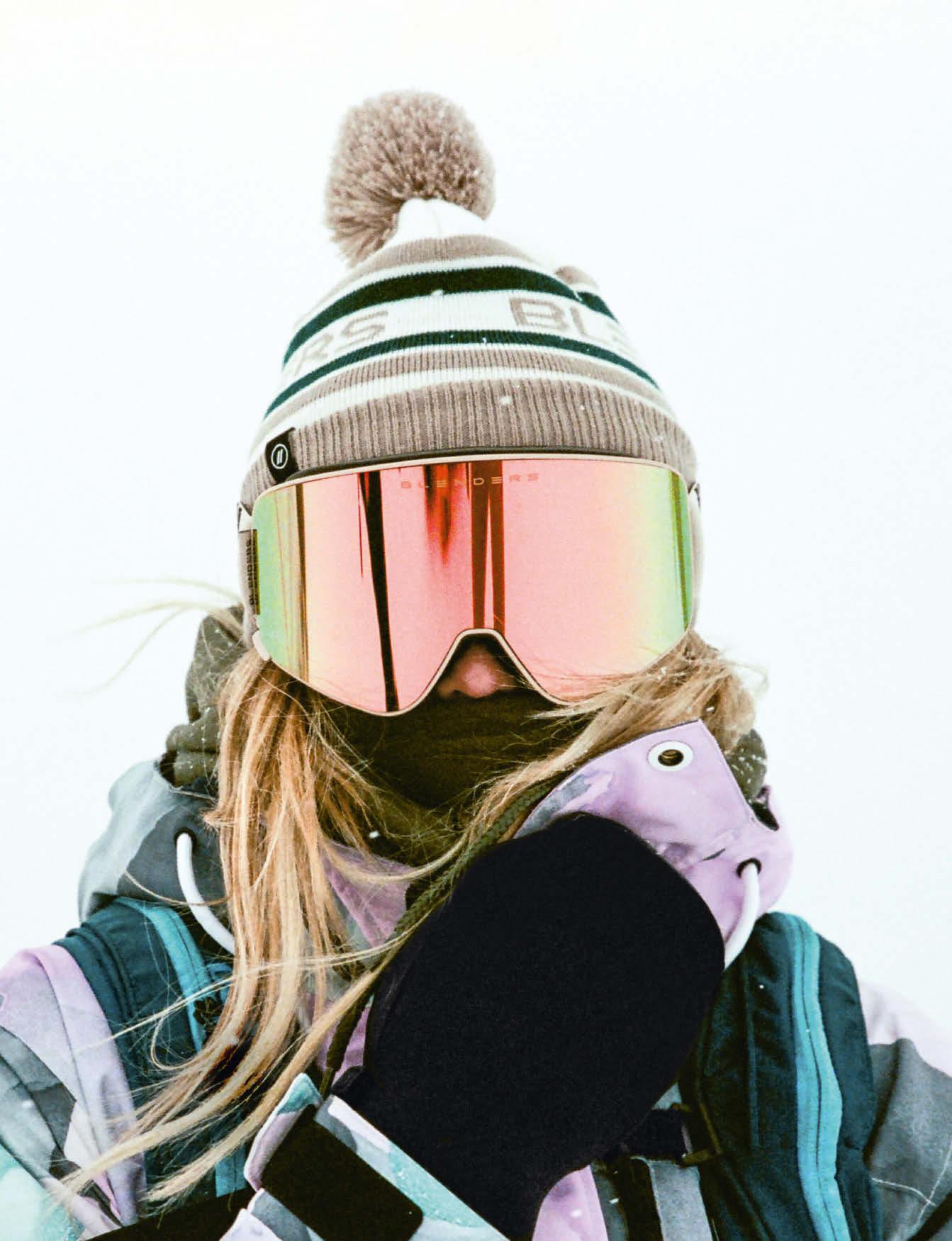
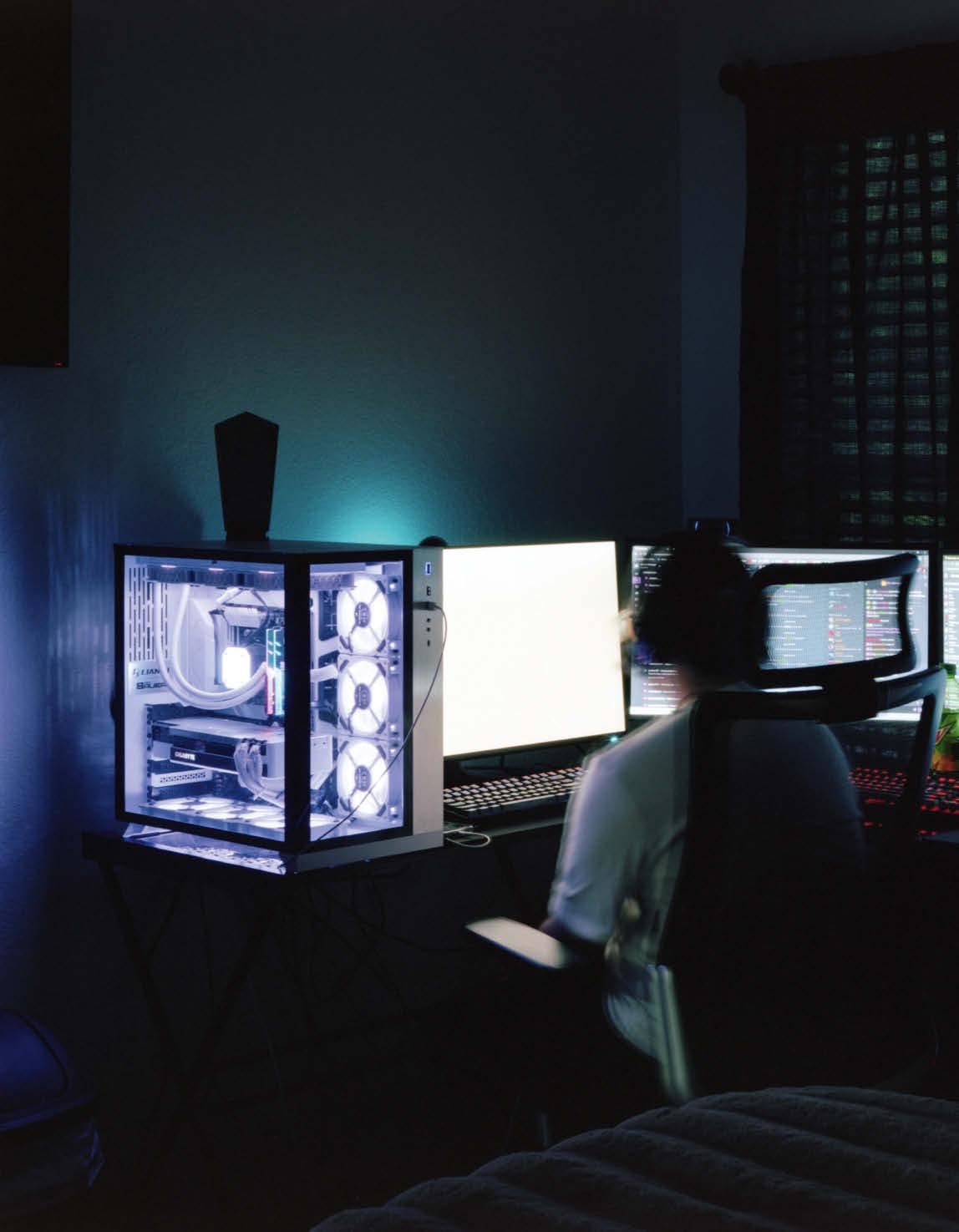 Light show: aHTracTXII plays in a $1,500 tournament from his bedroom in the Frisco apartment he shares with Flxnked
Light show: aHTracTXII plays in a $1,500 tournament from his bedroom in the Frisco apartment he shares with Flxnked
There is an invisible force all around us. It benefits almost all of us, but for an elite subculture of gamers it can bestow superpowers, immeasurable wealth and unparalleled freedom. And there’s one place where it exists in its purest, uncut form – Frisco is ground zero for the thing they call ping

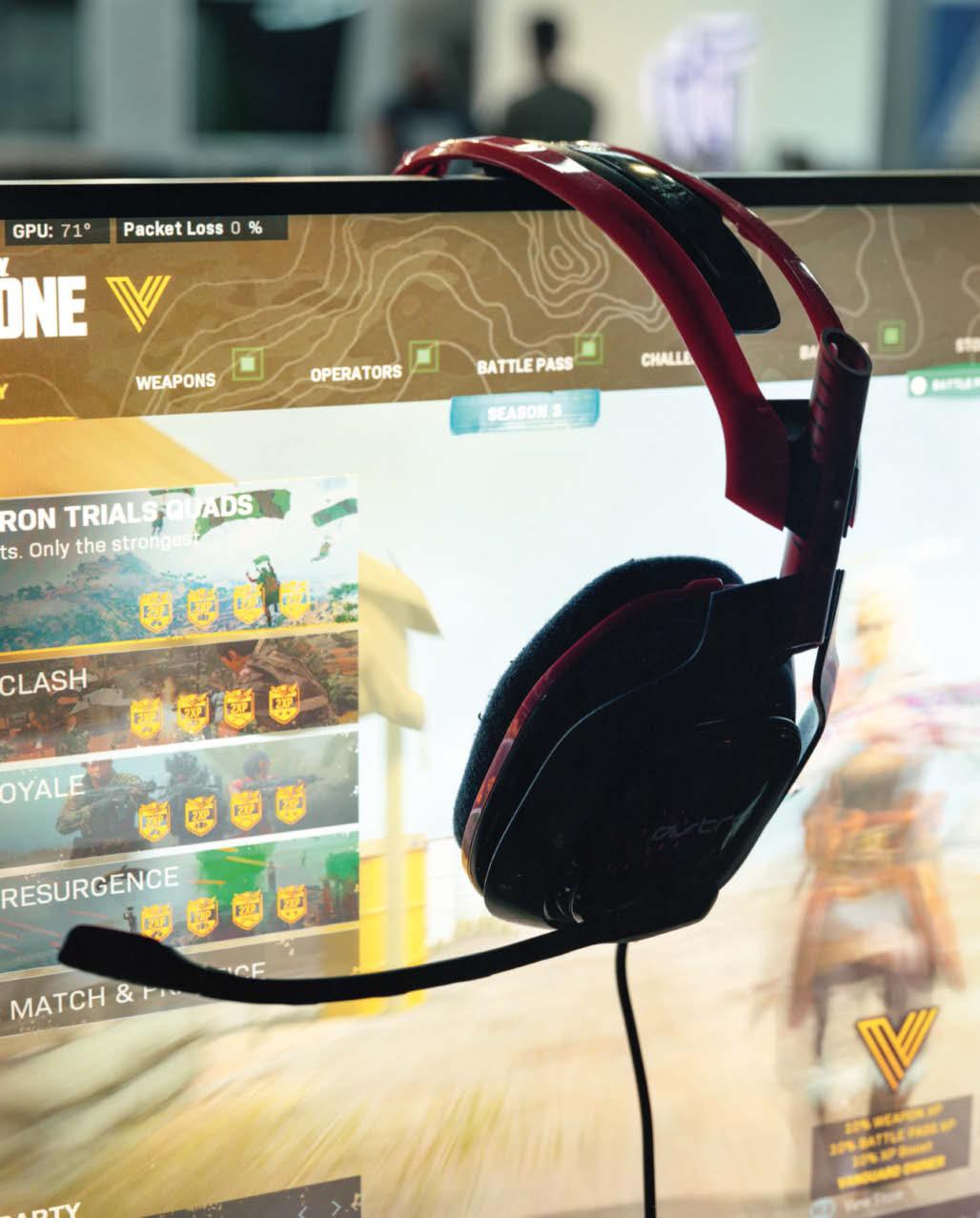
“Anywhere else, the best ping you’ll get is 15 milliseconds. Here, it’s seven. It’s absurd”
Play to win: (opposite) a headset hangs on a monitor on the day of the wager match with Jukeyz at the Mavs Gaming Hub in Dallas – the monitor shows ‘0% packet loss’, which requires an extremely strong internet connection; (this page, from left) Almond and Tommey during the $6,000 wager match against Jukeyz and HisokaT42 at the Mavs Gaming Hub in Dallas
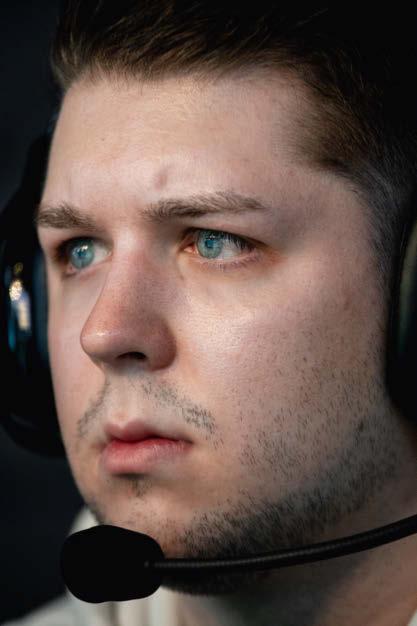
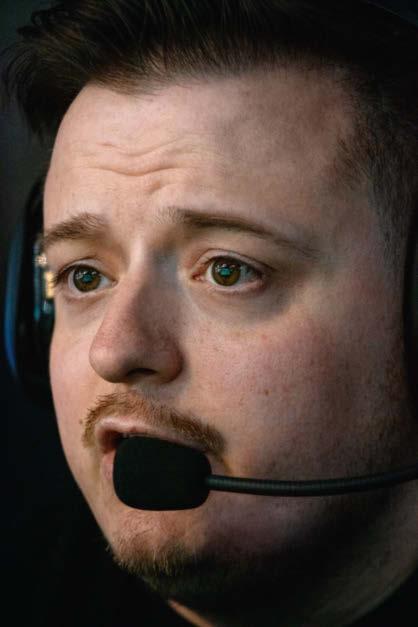
Frisco, Texas, is the last seven exits of the Dallas North Tollway. Around 50km from downtown Dallas, Frisco is where the line of suburban development – the office parks, bank towers, Whataburgers, and apartment complexes – begins to end, at least now. In between the new developments and construction sites are still bits and pieces of the old North Texas plains that have defined the region ever since the inland sea that once cut through North America receded into the gulf about 260 million years ago.
Around 1,200 years ago, the Caddo indigenous people moved west from the Mississippi River Valley and set up the first permanent settlements in this area, farming corn, squash and beans. Around 200 years ago, local cowboys built the first settlement of Frisco while driving cattle from ranches south of here up the Shawnee Trail and on to the markets in Kansas and Missouri, where they could make $30 to $50 per head. And since about 2020, young men from around the world have been quietly flocking to Frisco where, hidden away in mundane apartment complexes, they play Call of Duty: Warzone for up to 24 hours a day and earn incomes of up to $50,000 a month.
Call of Duty is a series of first-person shooter video games that began in 2003. In early 2020,
the series released Warzone, a free-to-download battle royale game in which up to 150 players compete against one another on a single enormous map, in teams of four, three, two, or individually, depending on the game type. Because the game was simple to play, free (its revenue model is based on microtransactions for special character and gun skins, and other unlockables) and entered the market just before a pandemic would trap millions of people in their living rooms for months, it quickly exploded in popularity and became the predominant first-person shooter game played around the world.
Flxnked and aHTracTXII live in a new apartment in a gated complex near the centre of Frisco. The apartment is clean and simply furnished: white walls, grey carpets, a stock image of a cityscape framed on the living-room wall, and a glass bowl of M&Ms on the kitchen countertop. From the back of a high-speed modem on the living-room floor, twin cables run into each bedroom where, next to neatly made beds, sit glowing computer set-ups optimised with dual monitors for simultaneous gaming, streaming, and communicating with fans.
Stretched out on the couch, aHTracTXII scrolls through local DoorDash [America’s Deliveroo]
options – Chick-Fil-A, Shake Shack, Raising Canes – before narrowing in on an order of Five Guys. Although it’s 5pm, he’s only been up for a couple of hours, making it somewhat unclear what meal this constitutes, but with a $1,500 online tournament starting in less than an hour, this might be his only chance to eat for the next five or six hours.
A soft-spoken and boyish 25-year-old from Chicago, aHTracTXII has been a professional gamer since he began making thousands of dollars a month in Call of Duty tournaments as a 13-year-old. However, until his move to Frisco a couple of months ago, he’d never lived away from home. “I’ve never had a real job. I just graduated high school and continued gaming,” he says. “I love it. It’s freedom – streaming whenever I want, eating whatever I want, doing my own thing and being on my own. Well, with him, I guess.”
Flxnked moved from Minnesota to Frisco in early 2022. He grew up playing hockey until a knee injury as a teenager shifted his focus towards Call of Duty In 2019, he received an esports scholarship to join the Call of Duty team at Davenport University in Grand Rapids, Michigan. However, when COVID struck, he dropped out of school and turned pro, hustling in the online community to gain access into the invitationonly tournaments that build the careers of elite players. “You’ll have months where you make zero dollars,” he says. “And then you’ll have months where you’ll make, like, $10-12,000 in one month.”
In a typical professional-level competition, two teams of two players each enter the game as one team of four. This way, they’re unable to kill each other, making the competition one in which each duo tries to rack up the most kills against the other players in the lobby. Therefore, unlike some esports
in which players compete on a Local Area Network or LAN – where computers are linked in close proximity – or at the very least in private sessions, Warzone pros are competing on the internet in public lobbies against regular people who often have no idea at all that there are pros alongside them playing for thousands of dollars. This aspect of Warzone competition is what makes it accessible and relatable to the masses of viewers who watch these matches on streams, but it’s also a system that leaves the potentially lucrative income of elite professionals at the mercy of internet speeds. It’s this emphasis on internet speed that sets Frisco apart for players like Flxnked.
“Anywhere else, the best ping you’ll usually get is like 15 [milliseconds],” he explains. “And here you get seven. You can even get lower sometimes. It’s absurd.”
For all of its invisible digital and wireless magic, the internet is essentially a vast physical network of servers, cables and modems that allow signals carrying information to travel between computers throughout the world. The speed by which information travels that network, either between devices or between servers and devices is referred to as ‘ping’ and is typically measured in milliseconds. There are essentially two major ways to shorten ping time. One is to improve the physical condition of the network itself so that information can move through it faster. For example, wireless internet is generally slower than connecting through physical cables, with fibre-optic cable networks being the absolute gold standard. But once speed is maximised through improving the hardware, the only other way of lowering ping time any further is by shortening the distance the information has to travel – setting up the computer as close as possible to the server.
Call of Duty’s servers are run by the game’s parent company, Activision Blizzard, and there are 29 dedicated Call of Duty servers around the world, with 12 in the US alone. While they’re located in various major metropolitan areas throughout the country – New York, Los Angeles, Chicago, San Francisco, Seattle, Atlanta etc – it’s known in the Call of Duty community that the Dallas servers, for whatever reason, provide the best ping times.
For the average internet user, latency or ping is often not very consequential – a slight delay in a video call or in live-streamed media. But for a gamer, every millisecond of delay in movement or reaction can have a tangible impact on the game. In Call of Duty, those milliseconds can be the deciding factor in landing a shot on an opponent before an opponent can fire a shot of their own. For the professional gamer who spends the majority of their waking hours playing wager games or online

“You’ll have months where you make zero dollars, then others it’ll be like $10-12,000”
industry: (below) a street sign for Internet Boulevard in Frisco

tournaments for thousands of dollars, this subtle advantage can mean the difference between never making it out of the stereotypical mother’s basement and living in a well-appointed Frisco apartment with a closet full of designer garments.
If Usain Bolt could guarantee a 30-millisecond advantage in every race simply by living in an apartment in Frisco, Texas, it’s fair to say that he very well might be renting the unit next door, with his own bowl of M&Ms on the counter.
Exit 14 of the Dallas North Tollway looks not so different from the 13 exits before it or the 25 after it. But past the Mattress Firm and Dick’s Sporting Goods, behind the Post Office, and before the Planet Fitness – in the middle of yet another perfectly manicured office park – a towering black monolith contains what could be the source of Frisco’s mystical essence. The name on the building reads ‘Inwood National Bank’, but public records list the address – 13760 Noel Road – as the Dallas-area home of Activision Publishing, Inc.
“If I were a betting man, I’d put money on that being where the servers are,” says Alex Gill, a gaming specialist for Red Bull who has spent the last four years in the Frisco esports scene. “If they’re not there, they’re in a private building nearby. We know they’re in the Dallas area, but everyone says Frisco. I don’t have a source for that; it could be that [Activision Blizzard] just told some people and it started a rumour. But it’s tribal knowledge.”
When he was growing up, Gill says, Dallas always had a seemingly magnetic pull for gamers. “Playing in the late ’90s, the companies that developed these earlier games didn’t have dedicated servers. The
way it worked was a player would set up a game, running it off of their computer as a server, or the developers would spin up [a session – enable an on-demand gaming server]. I remember Dallas was a place that a lot of them did spin up, because it’s centrally located in the US. Then, in the early 2000s, when online gaming started to ramp up, that’s when it happened.”
Whether it was gamers migrating to Frisco that brought the servers here, or the servers that drew the gamers, Gill says is a mystery. “It’s a chickenor-egg question. There were a few teams already located here – Complexity Gaming [founded in 2003] brag about being the oldest esports organisation that’s still in operation. They’re owned by the Dallas Cowboys. Team Envy, historically one of the biggest names in Call of Duty, was here. OpTic Gaming won top three esports brand globally for a couple of years in various rankings. I don’t know if the servers were already in Texas at the time, but they moved here from Chicago and it made this triumvirate of three of the larger older esports organisations. I haven’t talked to anyone at Activision Blizzard, but to me that would be the reason they’d want to build servers not only in Dallas but in Frisco. I don’t think it’s a coincidence.”
Then, in 2020, a global pandemic changed everything. “Servers became much more relevant,” says Gill. “Previously, [Activision Blizzard] did all their events in Columbus, Ohio. All the teams played on a private local server at the venue, where everything is even. But COVID threw a wrench in the system, because suddenly they had to do the pro leagues remotely. That brought ping back into the equation.” The 2020 Call of Duty League World Championship, the first time the championship was held online, was won by the Dallas Empire.
“There was a bit of drama early on, where these teams in Texas were winning and everyone was saying, ‘Oh, that’s just because the servers are in Dallas. You’re not really better than us.’ Then a weird thing happened: a bunch of the pro teams’ rosters all moved to Frisco. Their organisation operations stayed in LA, New York, wherever, but the rosters moved to apartments and houses in Frisco to be closer to the ping. I don’t think results changed that much, but that was a moment where the teams maybe recognised how important the ping was. When we really became a kind of a Call of Duty mecca for pro players.”
Today, however, the Inwood National Bank building isn’t giving up its secret. It’s the weekend and the office is closed. The sun is blazing, and the only person around is a guy across the street, quietly cleaning out his car.
“COVID threw a wrench in the system… Suddenly pro leagues had to be done remotely”
On a hot Saturday afternoon in the Deep Ellum section of Dallas, the city’s young, beautiful, and well-dressed pack the sidewalks outside the neighbourhood’s bars, restaurants and music venues as cars and motorcycles cruise the streets, creating a soundtrack that ranges from country to drill to Mexican corridos. A block from the main strip, in the air-conditioned calm of a converted industrial space that now houses the Dallas Mavericks Gaming Hub – a sleek esports venue funded by the city’s NBA franchise – Gill and a few staffers work quietly in the otherwise empty space to set up computers, monitors and an enormous projection screen for a Warzone match later that day. It will be between four of the top players in the world, who will be competing online in lobbies among the general public, for a wager of $6,000. As the staffers finish the set-up and run their first online test of the game, the computer reports a theoretically impossible ping of zero milliseconds.
The headliner for the day’s match is Jukeyz, a professional from Liverpool with more than $200,000 in career earnings from Warzone, which makes him one of only two Europe-based players on the game’s top 10 earnings list. Due to the effect of transatlantic distance on ping speeds, Europe-based players are at a significant disadvantage when playing a US-based game against US-based players on US-based servers. Jukeyz’ position on the earnings list despite this handicap speaks to both

 Space to breathe: Jukeyz takes a puff on his asthma inhaler during a break in the $6,000 wager match against Almond and Tommey at the Mavs Gaming Hub in Dallas
Space to breathe: Jukeyz takes a puff on his asthma inhaler during a break in the $6,000 wager match against Almond and Tommey at the Mavs Gaming Hub in Dallas
his talent as well as the reason for his visit to North America, and Dallas in particular. While officially he was on a 12-day, three-city US tour to build his audience and grow his brand, a welcome bi-product of his time in the States was being able to play every day with better ping and win more money. And the centrepiece of his stop in Dallas was a match against two of the best players in the world – together, the best duo in the world – Frisco residents Almond and Tommey.
Another Minnesotan transplant to Frisco, Almond is a 23-year-old phenom who, according
to esportsearnings.com, earned more than $250,000 from Warzone in 2021 alone. Tommey, a 29-year-old from England who recently moved to Frisco as well, is currently the top earner of all time in Warzone, with listed winnings totalling more than $400,000.
Jukeyz’s playing partner is HisokaT42, a teenager from South San Francisco, California, who had been a junior college football player until he figured out he could make $50,000 a year playing Warzone His dad – whose equally imposing physique and youthful energy makes him seem almost like a big
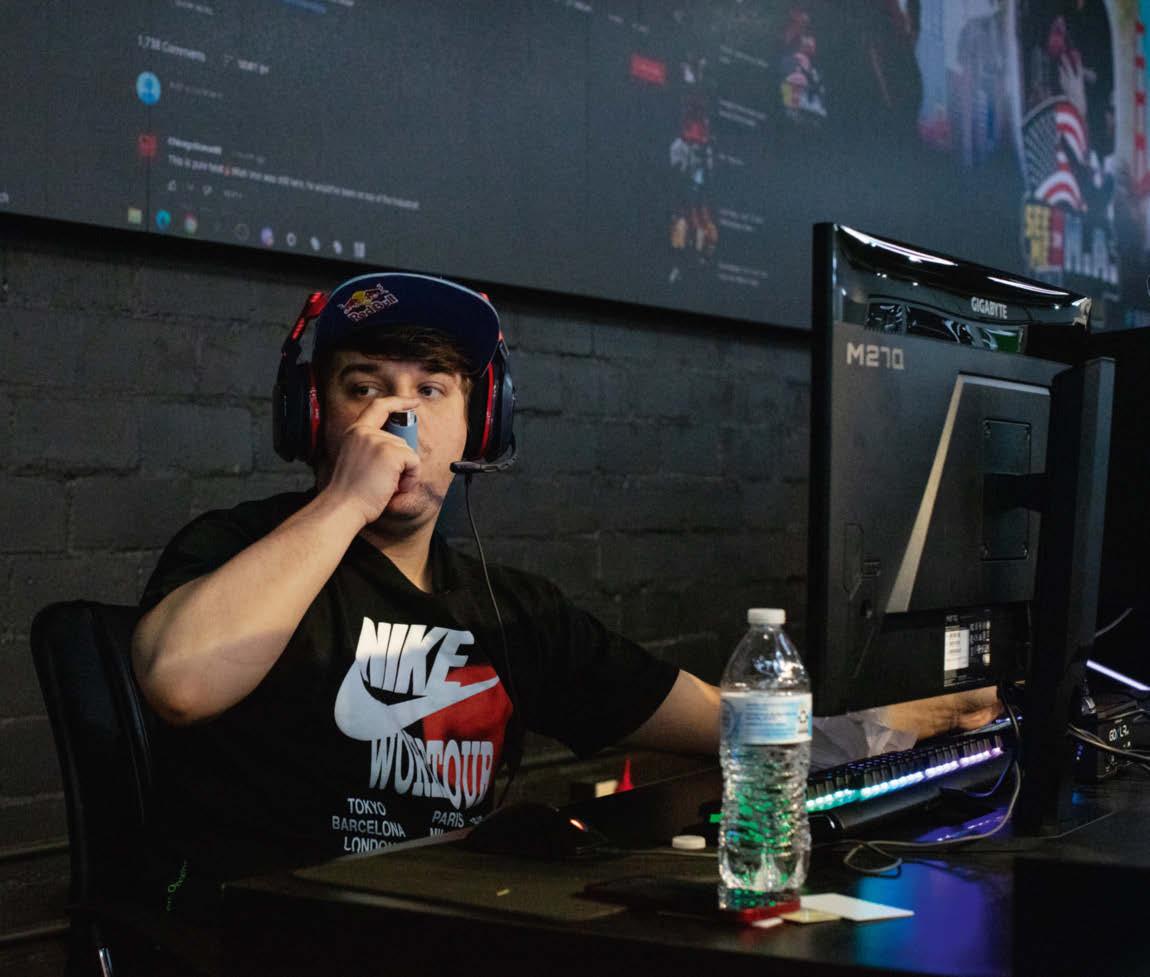
War zone: (top) at Jukeyz’s playing station during a break in the wager match at the Mavs Gaming Hub in Dallas are his controller, a Rolex that he removes before a game, and a used tissue; (right) Jukeyz’s screen during the wager match –while the match has very few in person spectators, thousands of fans watch the livestream online; (opposite page, from front to back) Tommey, Almond, Jukeyz and HisokaT42 play in a two-on-two, best-of-five wager match for $6,000 at the Mavs Gaming Hub


brother – has come to support his son’s rising star with the same intensity as if this were the sideline of any major professional sport.
As they enter the Mavs Gaming Hub for the match, Tommey is wearing Balenciaga, while Almond carries a Gucci bag. HisokaT42 is draped in Burberry, and Jukeyz removes the Rolex from his wrist as he sits down in the gaming chair, takes a hit from his asthma inhaler, and the four men start the match.
In the best of five series, Almond and Tommey quickly take the first two games and thus gain control of the match, before Jukeyz and HisokaT42 manage to pick up a win in the third game and stay alive in the series. In the fourth game, HisokaT42 reaches what athletes in traditional sports would refer to as a flow state. In person, it looks like a man sitting frozen in a chair, staring unblinking into a screen, completely detached from the world around him. But on the screen, the seizure-inducing speed and agility with which his virtual avatar moves through the map, and the lightning quickness of his reflexes and reactions to every potential target or threat, are almost impossible to track.
“There are questions over how much ping really impacts the outcome of these matches,” comments Gill. “To a point, of course, it does matter, like if it’s really slow. But there’s a threshold where it doesn’t necessarily impact performance. If somebody has a 30 ping and another has a 10 ping, that’s 20 milliseconds advantage, but there’s another area being studied inside gaming and that’s human physical response time. There are players that have absolutely the fastest reaction time, but there are also players at the top that I might even have a faster reaction time than. However, they’re better because they’re actually able to predict the future – they’re inside the heads of their opponents.”
In a fast-paced, instinctual game like Warzone, the best players employ a technique called ‘prefiring’. “You literally start shooting before you even see an opponent, predicting where they’re going to be,” explains Gill. “The players entering that flow state are going to end up winning, no matter what. That being said, you still have that 20-50 millisecond advantage. I might not be able to feel it, but they can.”
HisokaT42 racks up 35 kills and evens the series as his dad’s celebration booms across the venue. Although he and Jukeyz lose the fifth game, and with it the $6,000 wager, the performance dominates the post-match conversation, exemplifying the mystical lure of Dallas for Warzone players. Eliminating every millisecond creates the potential for moments in which the distance between the

gamer and the game disappears, and every mental impulse is translated directly into virtual action.
For devotees of Call of Duty, there are other places in the world with Activision servers or high-speed internet. But there’s nowhere else like Frisco. Whether housed in an immaculate climate-controlled suite or a humble closet maintained by a lone IT guy, the ping is here. And while it might be nice to get a peek at these holy servers, the magic can’t be understood simply by looking at a couple of objects inside the Inwood National Bank building. It’s far more evident in the 25-year-olds from Chicago leaving home to spend all their waking hours in dimly lit suburban apartments, the 23-year-olds from Minnesota with closets full of Gucci and Balenciaga, and the Liverpudlian crossing the Atlantic to team up with a 19-year-old South San Franciscan just to experience this unadulterated gaming fix.
As the rest of their travelling party head-off for dinner and drinks, Jukeyz and HisokaT42 stay glued to their screens late into the night, savouring their last tastes of Dallas internet to win back their money in online wager games. Eventually, they’ll meet back up with the group at a nightclub in time for the VIP booth and bottle service.
There are Activision servers in other places, but for CoD fans there’s nowhere else like Frisco
Queen of the sea: Johanna Nordblad is a phenomenon in the world of ice diving

In March 2021, Finnish freediver JOHANNA NORDBLAD dived 103m beneath an ice sheet on just a single breath – further than anyone before. In this cold, dark, underwater world, it’s the 46-year-old’s lack of speed that’s become her greatest strength
 Words KARIN CERNY Photography ELINA MANNINEN
Words KARIN CERNY Photography ELINA MANNINEN
Ice diver Johanna Nordblad sits on a frozen lake in her swimwear. The ice hole in front of her reveals dark, threatening-looking water beneath a 60cm-thick rim of solid ice. The air is -7°C, the water about 2°C. It’s not easy to even imagine slipping slowly beneath the ice into this unknown environment, to dive the full length of a football feld with just the oxygen that’s in your lungs. But this is what the 46-year-old Finn did on this day in March 2021, setting a new world record in the process. No man or woman has ever dived further beneath the ice without an oxygen tank: 103m on a single breath. No fippers. No wetsuit.

Nordblad knew that diving into this hostile world for almost three minutes would push her to the very edge of what is humanly possible. It’s why the makers
of the Netfix documentary Hold Your Breath: The Ice Dive tailed the extreme diver for more than a year, capturing her self-doubt, training and willpower in twilight-blue images of a world of ice and snow.
“It’s eerie trying to set that type of record, because there is no background data to go on,” says Nordblad on a warm spring day a year later. The freelance graphic designer lives in Helsinki – close to the water, of course. “I took it to the absolute limit. From 80 metres on, it felt like my heart was only beating once an hour. The last few metres seemed to go on for days. I thought my heart was going to stop working.”
Nordblad laughs a deep, warm laugh, her eyes shining. There’s something of the Greenland shark about her, vital yet sedate. The sluggish giants of the Arctic
“I took it to the absolute limit”
New goals: ice diving was never part of Nordblad’s plan, but a mountain-biking accident in 2010 changed all that

Flipping cold: when the lakes in Finland freeze over, Nordblad starts diving, sometimes in a neoprene suit, but mostly without one


Ocean, which live three times longer than those from warmer waters, are part of a genus of sharks known as Somniosus – a Latin word meaning sleepy. In the cold, the metabolism runs on its lowest setting and everything slows down to an astonishing extent. It took time for Nordblad to get used to this life in slow motion, to the unsettling feeling of lethargy in both body and mind.
Ice diving is a paradoxical affair. You’re in a life-threatening situation, but you must remain calm and relaxed. The diving refex sets in underwater. The body knows it has to conserve oxygen and switches to survival mode: the heart rate drops – as low as an incredible 10 beats per minute in professional freedivers – and the blood retreats inwards so as just to supply the vital organs. A kind of trance sets in. It can quickly lead to a deadly blackout.
“The cold is so overwhelming,” Nordblad explains. “You feel so many different things at the same time. That’s why you have to be totally in the moment to decide, ‘Can I dive to the next hole?’” In this situation, of course, the wrong move could be fatal – there’s no room for hasty decisions. “I was always the slowest diver in competitions,” says Nordblad. But what was once a handicap is now a strength. “Being slow is my own way of dealing with this life-threatening challenge.”
Ice diving, Nordblad says, has taught her a lesson for life. It has made her calmer and more relaxed, but also more focused. Anyone venturing into this strange, dark world must be at one with themselves. A single wrong thought can cost valuable oxygen. “The secret to free diving is that there’s absolutely no room for fear,” says Nordblad. “For me, that’s also the beauty of it. I have to leave all my problems on land. My mind must be relaxed when I’m diving.” If something makes her nervous or is bothering her, Nordblad makes a date in her diary. “It gives me a kind of peace. On that date, I will try to solve the
problem. But for now I don’t have to think about it any more.”
Nordblad’s compulsion to be in the water began when she was a child. She spent every spare minute at the pool. Then, in 2000, she discovered freediving. Nordblad lay at the bottom of the pool and watched the people swimming above her. “They looked like animals,” she says. “Everything was so peaceful. I felt like I was at one with nature. I soon realised I was addicted to this feeling.”
In 2004, Nordblad broke the women’s world record in distance diving with fippers: 158m in six minutes, 39 seconds. She also coached the Finnish national men’s freediving team and competed at world championships in Serbia and
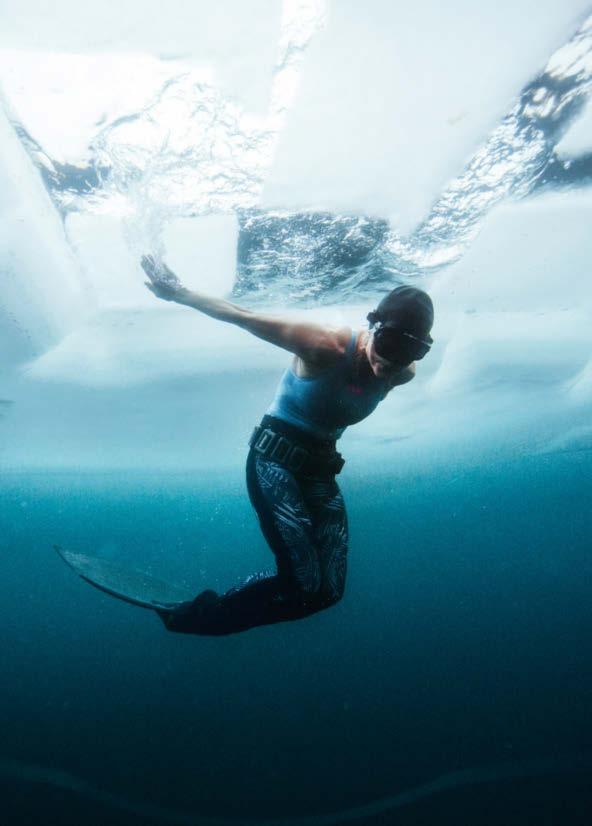
her home country. But in 2006 she found herself falling out of love with freediving. “Suddenly it wasn’t fun any more,” she says. “It had somehow become like a job. I no longer wanted to compete against others. I wanted to explore myself.” She looked for new, untried, untested ways of doing that.
“I started to train in my own way. I swam as slowly as I could for 20 minutes, to free up my head for new ideas.”
The cold wasn’t really part of her plan; Nordblad only fell in love with ice after an accident in 2010. She was downhill mountain-biking, but the track was slippery, and when her bike toppled over, her left foot got stuck in the pedal. She suffered severe damage to her leg.
Netflix and chill: Nordblad is the star of the documentary Hold Your Breath: The Ice Dive

The wound had to be kept open in hospital for ten days to avoid necrosis setting in. She was given morphine for the excruciating pain. While the bones eventually healed, the neural pathways didn’t want to play ball. Three years later, Nordblad was still waking up in the night, screaming in pain. “I thought I was going crazy,” she says. But then a doctor prescribed cold-water therapy. “I found it horrible at frst, sitting by the pool, putting my foot in the cold water. I had tears running down my face.” But two minutes later there was relief. The pain had disappeared. The cold helped Nordblad achieve inner peace and gave her a deep sense of satisfaction.
“The injury opened up a whole new world to me,” she says now. She began immersing herself fully in cold water, the shock of it leaving her short of breath. But she learned how to deal with it, understood how the cold crept into her head and lodged in her brain, that it was like pricking the skin with needles. Nordblad also learned that you can’t fght the cold, you have to accept it. The reward: an incredible feeling of freedom, like pressing a reset button. “You get into a meditative state without meditating,” she says. “Ice swimming is a spa treatment for lazy people. A couple of minutes in cold water feels like a 10-day break.” And what about ice diving? “That’s a spa treatment for the even lazier: 30 seconds will completely change your mindset. The ice hole is a gateway to a beautiful, quiet place where time stands still.”
Despite her experience, Nordblad’s world record was no mean feat. Just getting to the attempt was diffcult. Originally Nordblad ‘only’ wanted to dive down to 81m beneath the ice to break the men’s record of just over 70m. But then came the pandemic and her attempt had to be postponed. In the interim, a Russian woman had set an unoffcial record of 102m. The bar was suddenly very high. To make matters worse, pools were closed due to COVID, and Nordblad had a feeling she hadn’t trained enough. She was saved by her gallows humour.

“The day before my record attempt, I spoke to a friend on the phone and told her there were two possible scenarios,” she says. “Either I don’t listen to my inner voice while I’m underwater, I dive for too long and I die, or I come back up at the next hole and die of shame.” On the inside, Nordblad knew there was only one way for her anyway: to trust her
slow pace. “If I had thought that morning, ‘I have to dive 103 metres today,’ I would never have made it,” she says. “You can’t plan anything ahead. You have to decide in the moment.”
Nordblad holds not only the women’s record but is unbeaten by any man, too. In the Netfix documentary, she states, “Women can do everything men can do.” But that’s only the half of it, she now says. “That compartmentalisation means nothing to me. I have always done what I wanted. It never mattered to me that I was a girl.” She was the youngest in the family and always out and about with her brother and his friends. Even as a little girl there was never any doubt she’d be part of the fun and adventures. “I never thought I was different just because I was a girl. There shouldn’t be this distinction between boys’ and girls’ things.” That wasn’t always easy for her elder sister, Elina Manninen. “We called Johanna a monkey when she was a child,”
Manninen says. “I remember she was always doing something odd.”
The two are very different – Manninen is more anxious, not an adventurer – but the sisters make a perfect team: Nordblad dives and Manninen is her emotional support, taking care of the practical considerations to ensure her sister’s safety, allowing Nordblad to concentrate completely on her diving. Manninen is also a photographer and takes stunning underwater pictures of her sister, while freediving next to her, getting used to the cold herself. And Kasper, Nordblad’s son, has explored his mother’s world with her, too. “He has faith in me,” says Nordblad. “Before he was a teenager doing his own thing, we dived together a lot.”
On the day of her world-record attempt, Nordblad is on a yoga mat on frozen Lake Öllöri in northern Finland. “Five minutes left,” says a man’s voice. Her eyes are closed, her breathing calm. “One minute.” She sits there, stiff as a statue, wearing a bathrobe to keep warm. “Thirty seconds.” She loses the robe and takes a few more deep breaths. Then she dives, into a dark, icy world where everything happens in slow motion. She glides weightlessly through the water like a Greenland shark, for two minutes and 42 seconds. But to Nordblad it feels like days. johannanordblad.com; Instagram: @johannanordblad; elinamanninen.com; Instagram: @elinamanninen
“There shouldn’t be this distinction between boys’ and girls’ things”
her successful world-record attempt
When trials-riding master DANNY MACASKILL started filming an ambitious edit dedicated to the city of San Francisco, little did he know it would take five long years to get it in the bag. But, says the 36-year-old Scot, the blood, sweat and tears were worth it
 Words MARK NOBLE Photography DAVE MACKISON
Words MARK NOBLE Photography DAVE MACKISON
“This is a shot looking down at the city – a bit of a classic view. San Francisco is just a really interesting place to be, to ride, to look around.”

In this age of instant gratification, what kind of person takes on a challenge and refuses to accept failure – even after two dozen unsuccessful attempts, or a hundred, or perhaps even double, triple that? What about completing hundreds of those challenges?
Trials rider Danny MacAskill has been perfecting the impossible for more than a decade. When he released his Inspired Bicycles video, filmed in the streets of Edinburgh in 2009, MacAskill created one of the first bike videos to go viral, before ‘going viral’ was even a term. Since then, the now 36-year-old has released multiple landmark videos and short films, racking up millions of views as he takes his tyres to places no one else could.
MacAskill’s riding looks casual, born of natural talent alone, but in reality it takes steely determination and a laser focus to overcome what are almost unachievable feats: riding up and down a tank gun; balancing on a windmill blade a couple of hundred metres up; sliding your wheels lengthways down a fallen tree (this took well in excess of 350 tries to nail). These videos are testament to MacAskill’s apparently endless ability to evolve his riding.
“I always want to try to do something to the best of my ability,” he says. “I realised quite early on that, rather than trying to just one-up yourself, [I wanted each] film to have a different feel. In my thinking, it’s like, ‘How do I create something that’s different?’”
His latest film project, Danny MacAskill: Postcard from San Francisco, was initially different for the wrong reasons. Filming began way back in 2017 but was cut short when one of the city’s iconic skate spots bit back, hard. “The second day of filming, we went to this famous San Francisco spot called Third and Army. I found the line at the very end, where I planned to do something ambitious. I tried one attempt and slipped and broke my kneecap.”
Five years later, MacAskill – fully healed and displaying characteristic resilience – felt it was important to finish what he’d started in the US city. San Francisco has mythological status when it comes to BMX and skateboard spots; its geography and terrain make it unlike anywhere else in the world –the city is unforgiving, brutal and unconventional. And you can’t simply rock up and expect to film where you like at any time – you need a to-do list, a planned strategy, and legal permits that come with time limitations.
“I’ve spent a lot of time scouting in San Francisco, so outside the UK it’s the city I know best in the world – a beautiful, really interesting place,” says MacAskill. “With your mind completely open to everything around, you see potential in every edge, so you just make a huge list. And then we tried to get permissions to ride, which ended up being a pretty hard part of this project.”
After 40 or so locations were selected around the city – from famous skate spot China Banks to the infamous former prison on Alcatraz Island – MacAskill’s team applied for permits. Some of these were turned down, while others allowed access only for a limited amount of time at strange times of day. As these spots were spread across a wide geographical area, this meant MacAskill couldn’t easily switch locations, as he normally would, if one trick wasn’t working; instead, he’d just have to knuckle down and get it nailed. Often with an audience of curious onlookers.
“It’s been a long time,” says MacAskill. “When you’re trying to do stuff you’ve never done before –or stuff that sometimes nobody has ever done – you can easily spend two or more days on what ends up being 10 seconds on film. I’ve usually got a good idea of what I can do, and it may take me hundreds of tries to get it, but 98 per cent of the time the clip gets landed. But on this project I didn’t necessarily take into account what it’d be like filming on a permit, where you’ve got just four hours to learn the trick.”
Despite all the permissions and rejections, disparate locations and thousands of unsuccessful attempts, the resulting film is a jaw-dropping watch. MacAskill seems to effortlessly glide, jump and flip his way around surprising parts of a city that has long inspired his riding – with just a few hints at the pain that went into getting this final cut at long last. So does he feel he’s done what he set out to do? It seems that for MacAskill there’s no such thing as finished business. “You think about some of the set-ups you wanted to ride, that would be cool to find,” he says. “Rather than think about what I’ve achieved so far, I always think about the ones that got away.”
Watch Danny MacAskill: Postcard from San Francisco and behind-the-scenes footage at redbull.com
“With your mind completely open to everything around, you see potential in every edge”
“I mean, it’s not the hardest trick, but this is a big, thick, chunky chain with a slight twist in it… and OK, it was rocky down on the side. And it looks quite beautiful. We had a tight time limit, and there were lots of tourists around in the morning, so we went down first thing to try to ride it. It was definitely a little bit frustrating, but it was very cool to be riding there – the Fort Point chains are in an iconic part of San Francisco.”


“The idea was to kind of hop over the rail and then into this bridge support beam, which must be about a foot wide. I tried for a couple of days to kind of get myself up and over it, but the rail itself is about an inch off my maximum bunny-hopping height. It’s not easy, I can tell you, and I had a really short run-up. One time, I got so close that the stress level was quite high. I mean, it was really funny – my arms by the end of it were actually trembling, like my brain had gone into some different mode. It was weird trying to get the instinctual part of my brain to kind of get on with it. I mean, it looks cool, but it was hard trying to get my brain to chill out a bit while hopping up on that 25-foot-high [7.6m] rail, especially when you couldn’t see the landing until you were up there.”


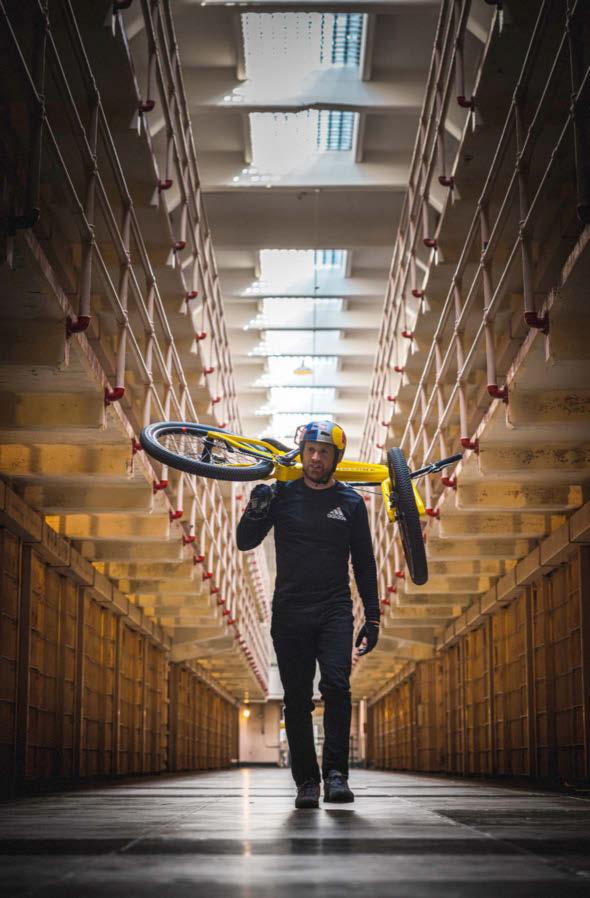

“This one is in the rec yard at Alcatraz. It was a nice, relatively straightforward bit of riding – a hop up to the rail and then down, going into the yard itself. I think there’s quite a famous clip at the very bottom of the banking with skateboarder Mark Gonzales. It’s interesting old concrete, but then at the same time it’s got this kind of history and it’s a mad place. But it was very cool to get to ride on it.”
“It was a funny place, Alcatraz. I think a lot of people get different emotions from the place. I put myself in the prisoners’ shoes a few times. You’d look in the cells, go into there and get one vibe, but then on the other hand it’s an iconic tourist attraction, too. So it’s weird, it’s got two sides to it. I’ve spent a lot of time on islands in Scotland that are kind of similar to Alcatraz, with World War One and Two defences, so it felt a little bit like home in some ways – just that mix of concrete and the smell of seagull shit. It has this vibe like, ‘OK, this is kind of my scene out here.’”

“[Before returning to SF] I had four months in this warehouse in Inverness where I was able to build replicas of some of the spots that I was hoping to clear [in SF], to practise on. It didn’t exactly instil confidence in my ability [to do this one] – it took me 300 tries to get across. It’s not actually the balance that’s the main issue, it’s how the tennis net moves on the cable: it twists, which then pulls my tyres off the side. But in the end I managed to do it ahead of schedule. If I hadn’t been practising in the warehouse, there’s no way I’d have been able to do it in that timeframe.”
“China Beach is a really cool, more unknown part of the city. The drop off that little pillar at the very top ended up being really disgusting, especially when we built this landing that was almost too far, so I’m trying to drop sixand-a-half feet to land on this thin wall. If I dropped my front wheel, I was basically looking at going over the bars into the back of the landing we’d built, 17 feet [5m] down to the beach, and then landing in the pile of driftwood there. So it wouldn’t have been fun. I had thought it was gonna be quite easy, actually – I thought this was quite within my limits. But in reality it ended up being a pretty hard day. I had a bit of a mental battle with that one.”

“This is a famous view of San Francisco. The idea of the film was to visit some of the most scenic parts of San Francisco and give it a rough theme of this postcard from the city, to tie it together. But the main thing, of course, was just trying to do the coolest riding I could find.”

“This was one of the lines I was most excited about, just in terms of how iconic China Banks is, and that it features in so many skate films. Originally I had a cool line that went out the opposite side of the banks – to basically jump off the side of the wall, I kind of go over that lantern and then I jump off the wall and land on a ledge. However, during those five years [between filming trips] they put some extra ledge on the area I was going to jump onto. So I changed my plans and went in the opposite direction. It was just very cool just getting to ride it. I’ve been hearing rumours that [China Banks] is gonna get knocked down, that the whole square is getting changed, so it was great to get to do something on it before a spot like that disappears for ever.”
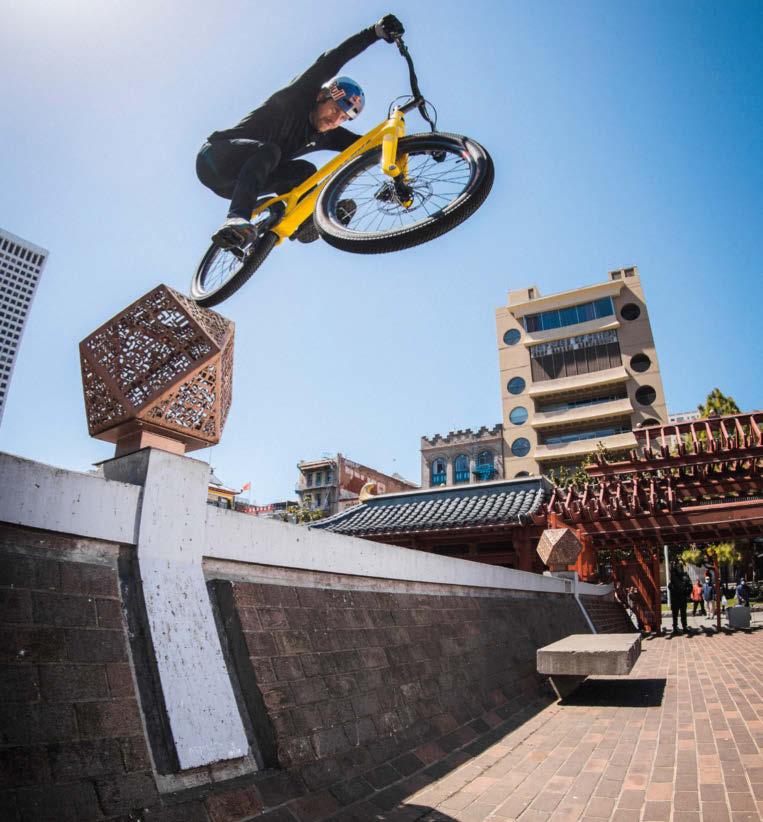
“Originally, I planned to 360 off a certain point on the Alcatraz Steps, but I thought, ‘Well, it’d be quite good to front-flip on – that would be a cool thing to get to do in this iconic yard.’ The step I was going off was just over six or seven feet [2m] – right on the limit of how low you can front-flip to flat, especially having to clear out that kind of distance – and I ended up blowing up a couple of rear wheels. I had to go back two days later to get it done, I broke another wheel, then eventually landed it.”





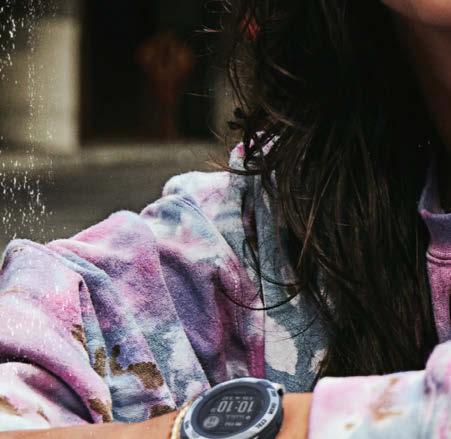
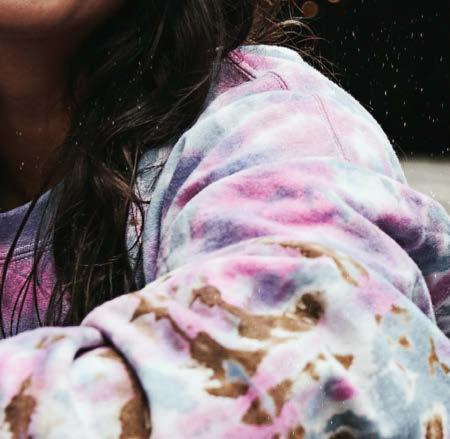




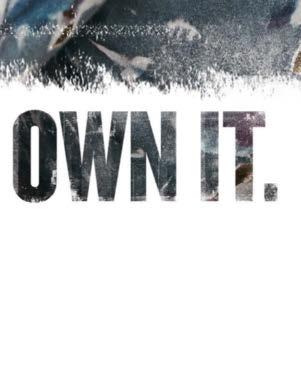
























Crew members frantically grind rattling winches. Others peer out of the cabin windows, intently adjusting the length of the sail lines. It’s hot. It’s loud. Everything is shaking. Skipper Charlie Enright barks out orders above the din. When I ask what I should do, he snaps, “Just sit right down there on that seat.” It’s not how I’d imagined my debut voyage aboard the IMOCA, but it’s probably best to leave it to the professionals.
The sky is blue and there’s a mild breeze as we depart Newport Harbour for Narragansett Bay (see map) – a 380sq-km body of water connecting Rhode Island to the Atlantic Ocean. I’m on a test run of a sports yacht that a team of top nautical designers has spent two years crafting in France. The aim? To win The Ocean Race, a six-month, 32,000 nautical-mile (60,000km) round-the-world epic.
Five hours earlier, I was sipping coffee with Enright among the colonial-style houses and cobbled streets of Newport’s historic district. Athletic in stature, with a stubble beard and a striking smile, the 38-year-old Rhode Islander is the skipper of the 11th Hour Racing Team, with two Ocean Race campaigns to his name. “The Ocean Race is the pinnacle of offshore sailing,” he told me. “It’s the most mentally taxing team-sailing competition there is. It pushes everybody to the limit.”
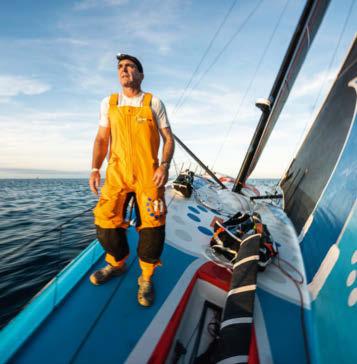
Launched in 1973 and held every three to four years, the event sees the world’s best sailors race around the globe nonstop, day and night. Starting in Alicante, southeast Spain, the route ticks off every ocean bar the Arctic, with stopovers in six cities before finishing in Genoa, Italy.
The longest and toughest stage is between Cape Town in South Africa and Itajaí, Brazil – a passage of 12,750 nautical miles
(23,613km) that takes longer than a month. “It’s the fiercest part of this planet,” says Enright. “There are waves bigger than the boat is long, and snow on deck. In the last race, I remember quite vividly going 30 knots [55kph] in 30 knots of wind at a temperature of 30°F (-1°C). A ‘triple 30’ – that’s something I’d never experienced before.”
Exhaustion (crew members sleep in four-hour shifts), cabin fever (the toilet is a black bucket) and mishaps – during the last race, the team had to repurpose a small island’s telephone pole when their mast broke – are only some of the challenges competitors must contend with. “There’s no time to think about anything other than the task at hand,” says Enright. “Even when you finish a leg, you’re thinking about how you can improve.”
For the 2022-23 edition, the race will be contested by two different boat classes: the VO65 and the new IMOCA. The former boat is used by all teams in that class, creating an equal playing field, while the latter is an ‘open’ class, allowing the designers to create a vessel that is faster, lighter and more efficient, with high-tech improvements. “If you had to equate it to a car, the VO65 is a bus,” says Enright. “It’s rugged, houses [seven to 10] people. The IMOCA is more like a Ferrari. It’s smaller [a crew of four or five], lower to the ground, and it goes fast. But we compete off-road. So, would you rather have a bus or a Ferrari?”
Approaching the IMOCA in Newport Harbour by motorboat, it looks like a typical sports yacht – monohull, aerodynamic, and about 20m long. But there are two obvious differences. Rather than an open deck, it has a protected cockpit at the rear. It also has wings. I say this to boat captain James ‘Irish’ O’Mahony and he laughs. “The foils act like aeroplane wings,” he explains. “The wind moves faster over the front, slower on the bottom, and joins in the middle to create the lift for the
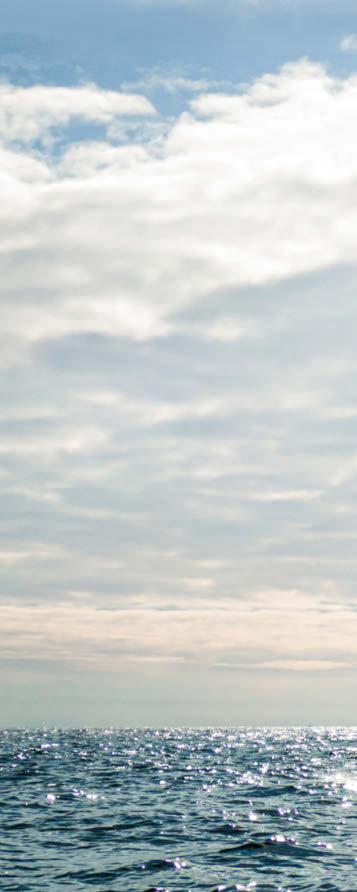
“The Ocean Race is the pinnacle of offshore sailing. It’s the most mentally taxing teamsailing competition there is. It pushes everybody to the limit”
Charlie Enright, skipper, 11th Hour Racing Team
As well as competing in The Ocean Race, 11th Hour Racing Team is dedicated to environmental causes. Its IMOCA was constructed using renewable and recyclable materials, many sourced from within a 50km radius of the shipyard, cutting its total carbon footprint by a third compared with a standard edition. The cockpit’s roof is covered with solar panels that generate enough power to run all daytime electrical loads,


and the crew doesn’t take any freshwater onboard, instead desalinating sea water to prevent plastic waste. And this ocean-health programme isn’t just limited to professional sailing: it also funds projects in innovative marine technologies, supplies software for boat manufacturers, and leads educational initiatives, teaching children sailing and ocean literacy.

For landlubbers visiting Newport
Educate yourself Steer and design boats with the interactive exhibits at The Sailing Museum in downtown Newport. You’ll also find the National Sailing Hall of Fame and the America’s Cup Hall of Fame here.
Get wet Experience history by going aboard an America’s Cup-winning vessel like the two-time champion Intrepid, or the Rum Runner II – a smuggling yacht used during Prohibition.
Look closer Gawp at hundreds of sailboats and powerboats undergoing maintenance or in their final stage of construction at Safe Harbor Newport Shipyard.
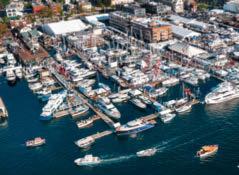
Take a swig Mingle with original sea dogs at the International Yacht and Athletic Club (IYAC) on Thames Street, or meet local boatbuilders after work at The Fastnet Pub on Broadway.
boat.” They enable the yacht to float over the waves and reach almost 40 knots (74kph) – speeds previously unheard of in The Ocean Race.
“Watch your head,” says Irish as he guides me into the IMOCA’s cramped, 5sq-m cockpit. The crew can completely control the boat from down here – you only need to go on deck to change the sails – and it doubles as living and sleeping quarters. There are dozens of colourcoded sail lines, each assigned to upperdeck equipment such as sheets, boom and mast. Data (wind speed and direction) from cameras and other measuring gear on deck is displayed on three screens.
“Being on an IMOCA feels a bit like being stuck in a washing machine on high speed,” grins Irish as we set sail, “but as long as took your sea sickness tablet, you’ll be fine.” Erm, what tablet?
Turns out I’m in luck. The sea is calm. That doesn’t make sailing the IMOCA a cakewalk, though. As soon as Enright takes the helm, the hurry-scurry starts,


and I’m instructed to take a back seat. If this is what it’s like when conditions are good, it’s hard to imagine what it feels like to be trapped in this sweatbox for 30-plus days on the stormy Southern Ocean.
As team navigator Simon ‘SiFi’ Fisher calmly explains to me how to control the foils in the middle of this rumpus, Enright interrupts: “You’re going to be in the hot seat!” He hands me the tiller. My stomach churns. I stick my head out of the cockpit. The wind slaps me in the face – and we’re only sailing at 15 knots (27kph).
The seven-tonne beast is surprisingly smooth yet sensitive to steer. Every small hand movement changes its course slightly. It’s a majestic feeling, and as I steer towards harbour, the impressive Newport Bridge at our back, I can see for the first time why you’d consider living in a washing machine for half a year.
Follow the 14th edition of The Ocean Race from January 15 to July 1 at theoceanrace.com. The ffth leg begins in Newport on May 21
“Being on an IMOCA feels like being stuck in a washing machine on high speed”
James O’Mahony, boat captain
Abicycle is a multi-faceted beast. At its most basic level, it’s a way of getting from A to B under your own steam (or, if aboard an e-bike, with a little bit of assistance along the way). But it’s much more than this. It’s also your own personal gym, a source of fun (both Types –1 and 2) and can propel you on your path to adventure.

While the humble bike is a pretty perfect invention on its own, the riding experience is enhanced with technology: GPS to help you navigate new ground; a heart-rate monitor to moderate your efforts; a head unit that shows how far you’ve come.
Historically, this required various bits of additional (and expensive) kit. Over the past decade, smartwatches have boiled all that tech down into something that can be worn on a wrist.
The Garmin Instinct® 2 and 2S are the latest seismic shift in wearables. Available in two builds – standard or slightly smaller (hence the ‘S’) – with or without solar charging, they enhance any pedal-powered pursuit.
From ‘Gravel’ to ‘Bike Indoor’ to ‘eMTB’, the smartwatches come with numerous cyclingspecific activity apps baked in. Each unique profile displays and logs discipline-specific metrics – such as MTB’s ‘Flow’ score, which tells you how smoothly you sessioned a downhill trail. But it’s not just tracking a ride for the sake of it. The Instinct® 2 and 2S act as a wrist-based coach, constantly crunching the numbers (heart-rate variability, stress, activity data) to help you achieve your goals. And even if
you’re not training for a specific event, they’ll guide you through workouts, based on your recovery levels, that target gaps in your overall fitness.
They’re not just aimed at performance junkies, however. The Instinct® 2 and 2S are also perfect for multi-day bikepacking explorers, where their built-in multi-satellite GPS can help accurately direct you on a preplanned course via breadcrumb trail and turn-by-turn navigation. And with the regular-sized solar version boasting infinite battery in smartwatch mode*, up to 30 hours with GPS and 48 hours GPS with solar*, they have the stamina to keep going for an entire weekend of two-wheeled expedition. (*Assuming three hours’ use per day in 50,000 lux conditions)
Garmin’s Instinct® 2 and 2S smartwatches are like a personal coach on your wrist, helping you achieve your goals
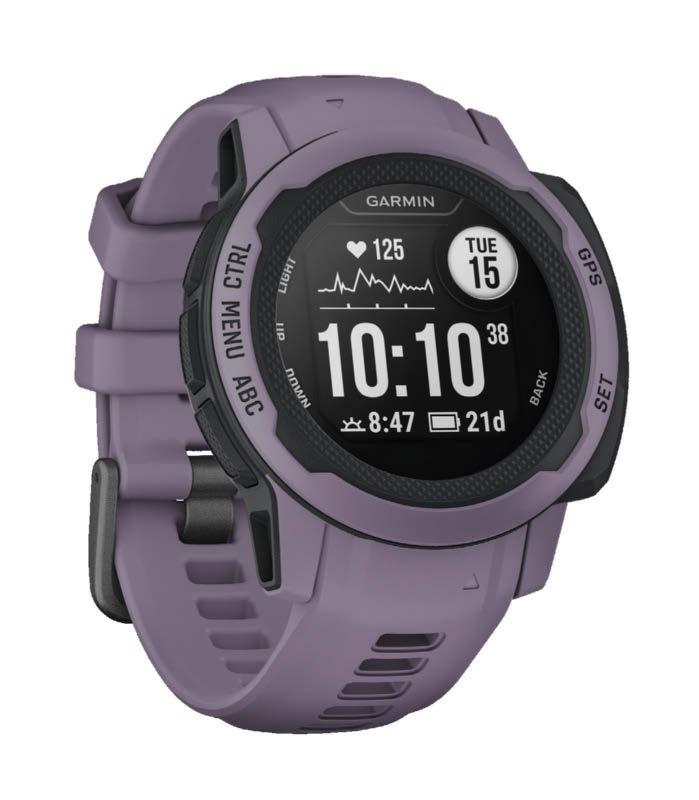
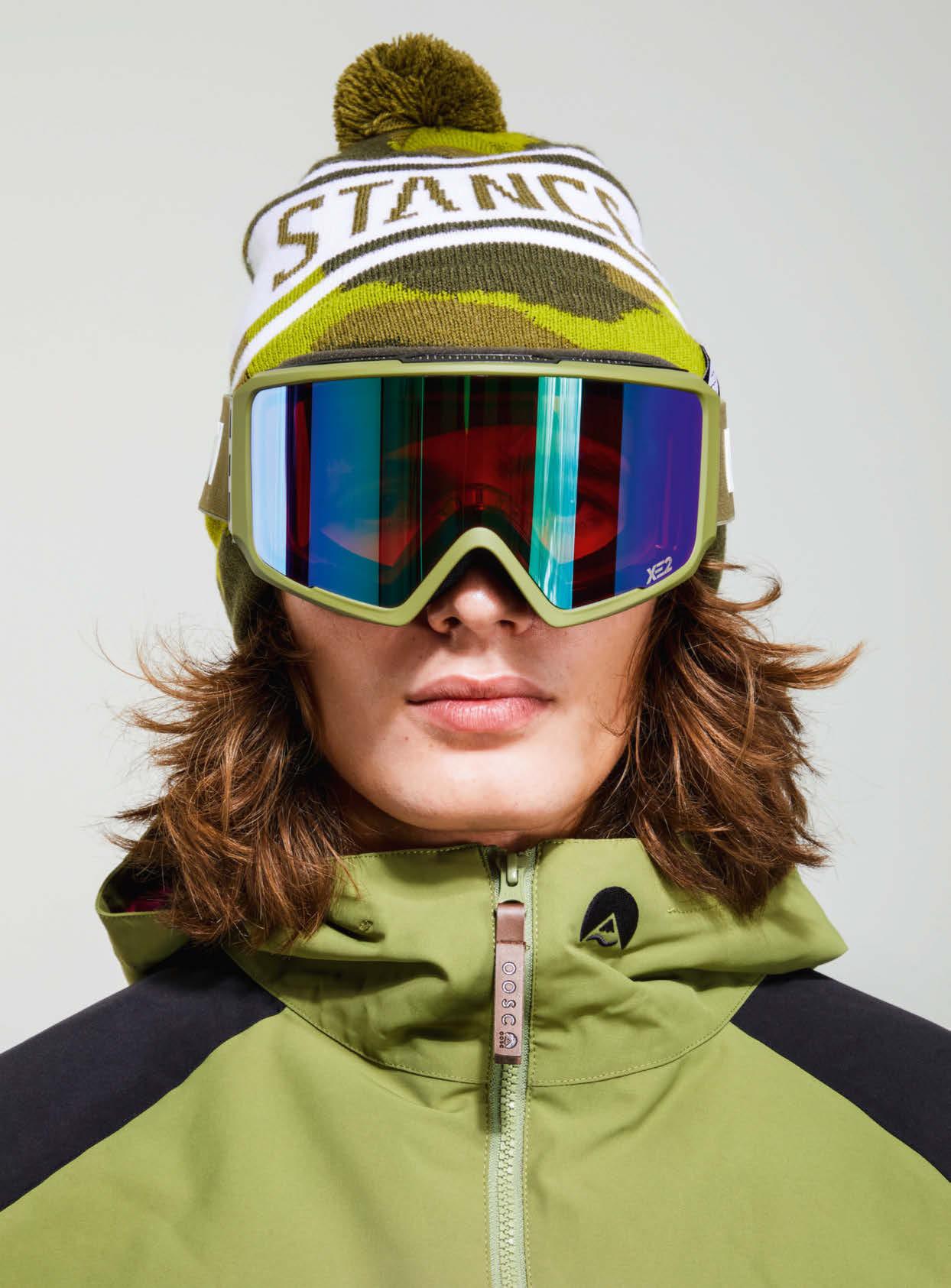
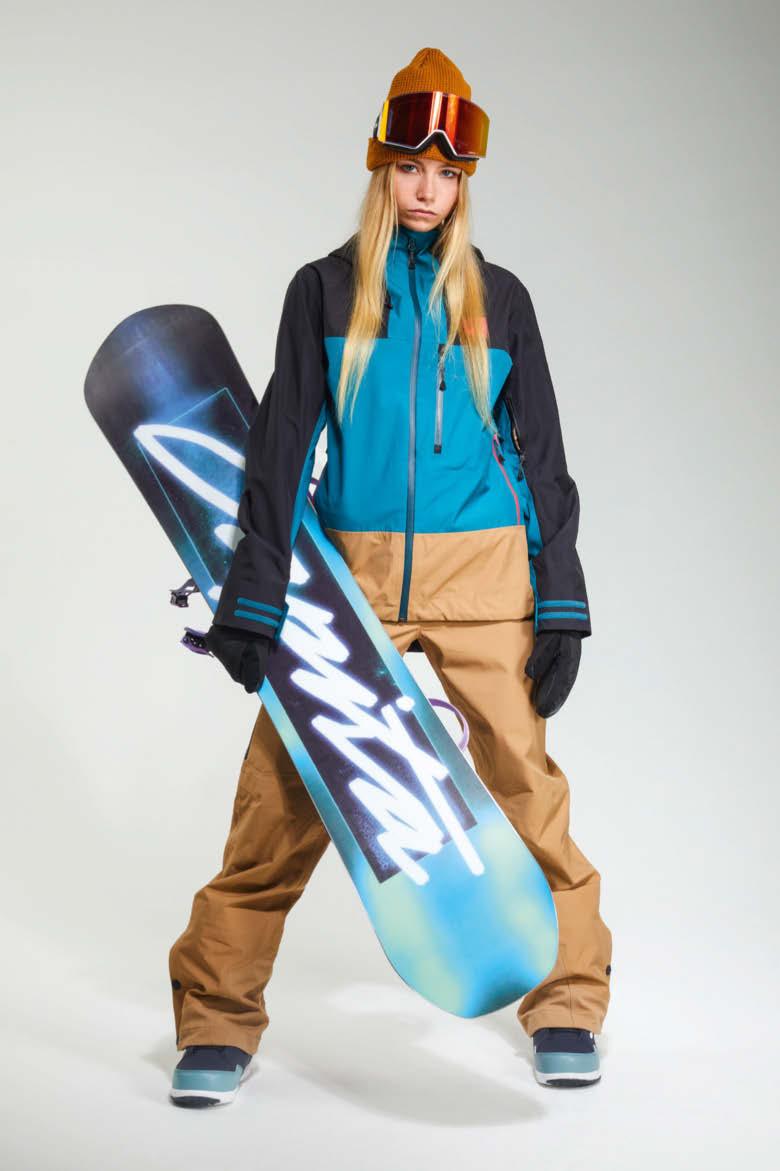

POC Levator MIPS Helmet with Integrated Visor, pocsports.com; HELLY HANSEN Odin 9 Worlds 2.0 Outdoor Shell Jacket, hellyhansen.com; STUBBLE & CO Roll Top Mini Backpack, stubbleandco.com


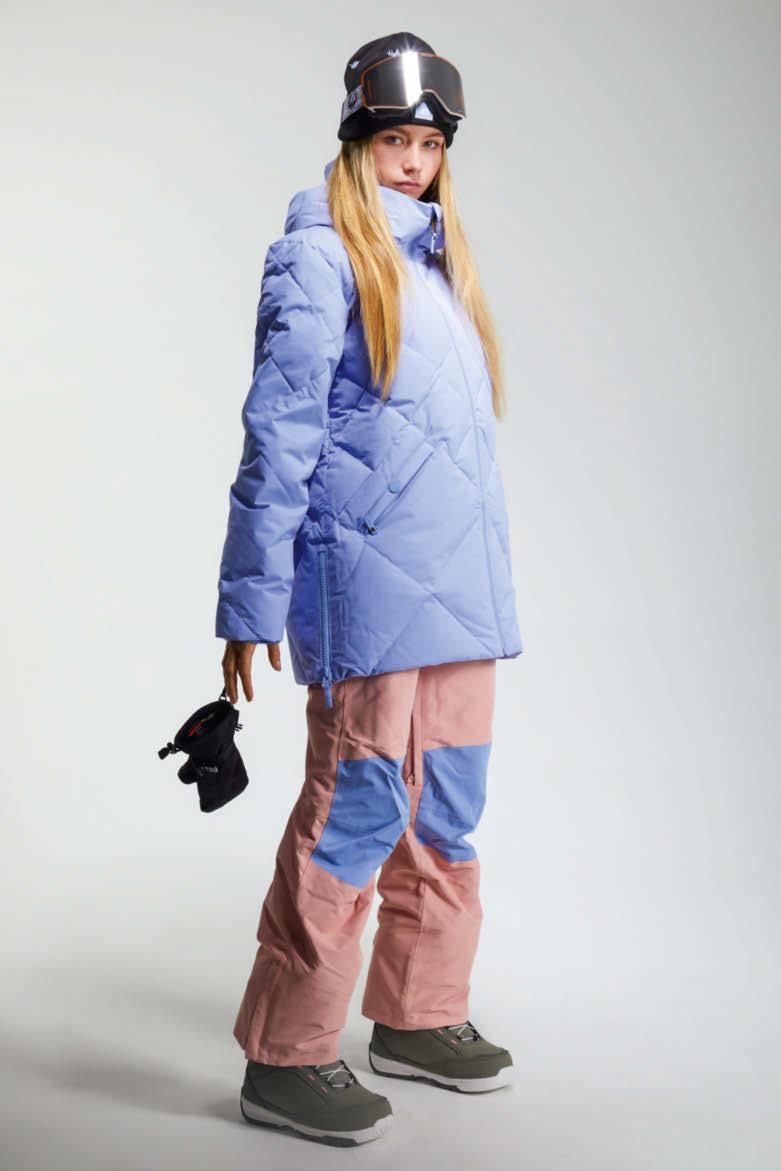
100% Snowcraft XL Goggles, 100percent.com; THRUDARK Ronin Tanto Jacket and Ronin Katana Bib Pants, thrudark. com; GROUNDTRUTH RIKR 24L Backpack, groundtruth.global; MILO The Action Communicator, okmilo.com; 686 Linear Under Cuff Mitts, 686.com; K2 Recon 120 Ski Boots, k2snow.com; SIMPLY Recreation Skis, simplyrc.co
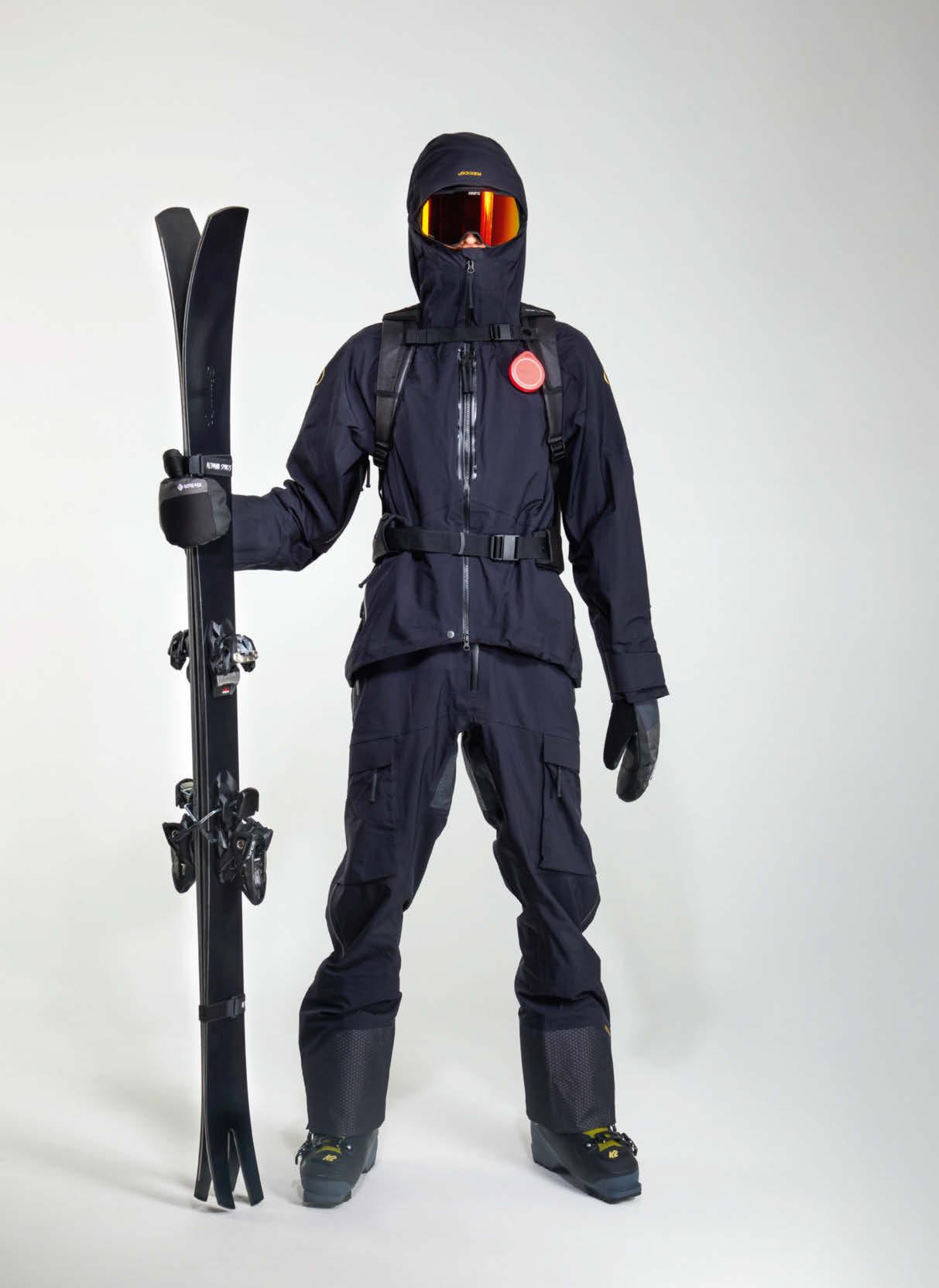

From top: 100% Snowcraft Goggles (with additional lens), 100percent.com; POC Nexal Clarity Goggles, pocsports. com; SMITH OPTICS Squad MAG Goggles (with additional lens), smithoptics.com; DRAGON ALLIANCE RVX Mag OTG Goggles (with additional lens), uk.dragonalliance.com; MESSYWEEKEND Achton XEP Goggles, messyweekend.com
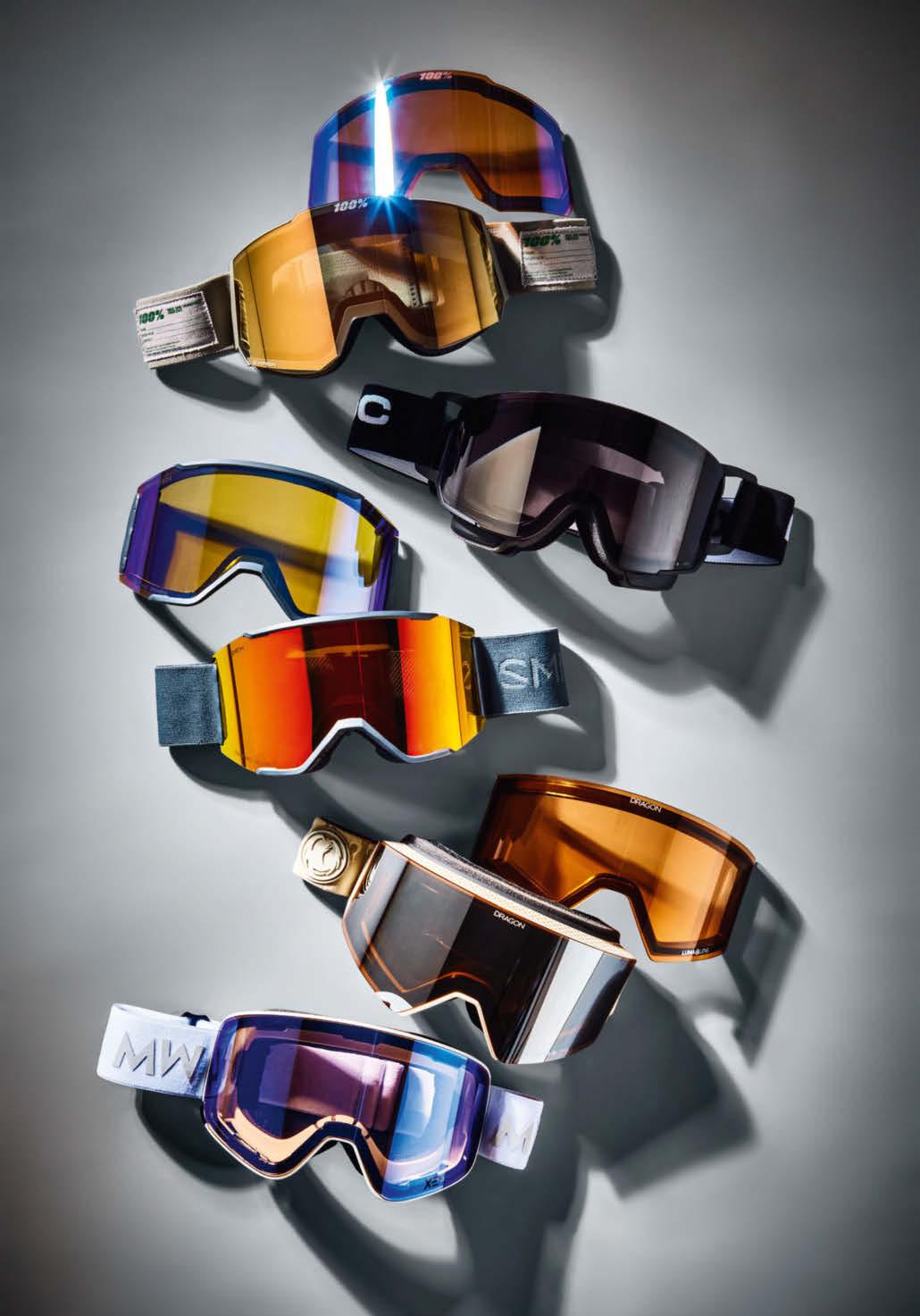
ROXY Nevea Beanie, roxy-uk.co.uk; POC Fovea Clarity Goggles, pocsports.com; 66°NORTH Hornstrandir Jacket, 66north.com; 686 Linear Mitts, 686.com; MARMOT Orion Pants, marmot.eu; SALOMON S/Pro Alpha Ski Boots, salomon.com; K2 Mindbender 89Ti Skis, k2snow.com; SCOTT SPORTS Pro Taper SRS Poles, scott-sports.com.
Models: GEORGIA DAVIS and VINCENT @ SELECT. Grooming: LINDA BURNS

Abandon the flesh. World-champion powerlifter Julian McKerrow shows how plants can make you mighty
If Icelandic strongman Hafþór Björnsson – better known as ‘The Mountain’ from Game of Thrones, and regarded by some to be the strongest man who ever lived – told you to eat a plate of fermented shark fin, not many would argue. But as a lifelong vegetarian it wasn’t something Julian McKerrow could stomach.
“It smelled like something had died,” says the 32-yearold Londoner. “Not to the extent where you’d throw up, but not far from it.”
It was back in 2018 that the IT professional found himself staring down Iceland’s national dish in the capital, Reykjavík. This was no techsupport mission: a multiple world champion and recordholding amateur powerlifter in his spare time, McKerrow had been invited to the land of fire and ice to train with modern-day Viking Björnsson.
But his meat-free diet was causing confusion in the camp. “He flat-out didn’t believe me,” recalls McKerrow. “His wife was like, ‘No, Julian isn’t lying. He actually is vegetarian.’ I get that a lot.”
No wonder – standing at six foot five (1.95m), with a competitive weight of 19st 9lb (125kg), McKerrow is a literal giant among men. His chosen strength-sport – powerlifting – focuses on three of the best-known gym lifts: squat, bench press and deadlift. Powerlifting competitions see pumped-up participants attempt to lift the heaviest weight they can in each of the three disciplines. The athlete
with the highest combined total is the winner.
Historically, the consensus has been that protein from meat – and lots of it – is essential to compete in this all-out show of strength. Despite his many powerlifting achievements on a vegetarian diet, including a personal best deadlift of 332.5kg – roughly the weight of a grand piano –McKerrow still encounters this outdated misconception. “Vegetarians are thought of as being smaller and weak. I’ve had high-level people trying to recommend that I would potentially be able to lift more [if I ate meat].”
Keen to fulfil his potential, McKerrow scoured scientific research for evidence that swapping salads for steaks would be a benefit, but found nothing that outweighed the positives his vegetarianism provides. “I’m rarely sick,
never have any stomach issues, and I don’t feel tired,” he says. And like they say, if it ain’t broke...
McKerrow’s diet is working for him on the gym floor, too. “At any competition or strength event that I’ve ever been to, if I’m not winning, then I’m usually near the top,” he says.

Here, the strongman shares some of his meat-free, musclebuilding tips…
McKerrow spends his four weekly workouts perfecting the three powerlifting exercises: “I focus on technique and form. Ultimate strength can only go so far, but efficiencies and technique can take you a long way.” He also works on the supporting muscles that help him at various stages of the lifts. “The upper back, for example, supports you during a bench press. If it’s strong and stable, that’s going to help with a bigger weight.”
“I eat about 4,000 to 4,500 calories a day to maintain my size and strength,” McKerrow says. He’ll add an extra 1,000 when building strength, but will cut back a similar amount to make his competitive weight limit. “I’ve had to drop 5kg before, but I’ll do it over two months. I don’t yo-yo diet, because it impacts your strength and training ability.”
“I usually have about five meals a day, and each is around the size of my fully opened hand.” All tend to be 60-per-cent carbs (rice, potatoes, pasta), plus a protein (lentils, mixed beans, or wheat gluten-based mock duck) and vitamin-packed greens or salad. He’ll also have two protein shakes – one in the morning and another before bed. But he draws the line at raw eggs: “I’m not at that Rocky level. If I fancy them, I might scramble four and that’s it.”
Follow Julian McKerrow on Instagram: @365muscleuk
“People have tried to tell me I’d lift more if I ate meat”
Julian McKerrow, powerlifter
Fjällräven Classic UK: 65km through the dramatic Scottish Cairngorms, along deep valleys carved by centuries of grinding ice. Winding past ancient hunting lodges, alongside tumbling rivers and amongst Caledonian pine forests, this trek is the first Classic held here in the UK, and it’s thrown every landscape, weather and terrain at its 200 participants.

As well as the original event in Sweden, Fjällräven now hosts its Classics globally, with treks in Denmark, South Korea, Germany and the USA. Each shares the aim of making nature more accessible and inclusive, fully immersing participants into the environment and enabling them to experience the personal connection that inevitably follows. Placing the participants into the very fabric of the region, this year’s UK Classic pairs the challenging trek with tastes and celebrations of local culture.
Our four-day trek has been one of immense and overwhelming beauty, combined with the test of adapting to constantly changing weather. Yet I think that element of challenge is the beauty and draw of it all. Nature provides the framework for us to be present. To simply experience life without the usual, everyday distractions. From the narrow mountain tracks and rivers
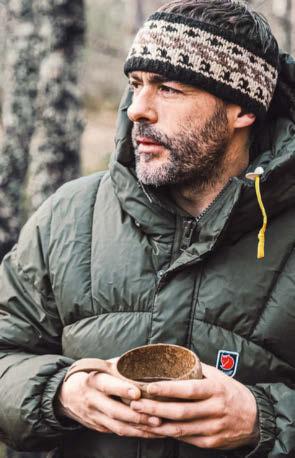
speckled with trout and salmon, to the roaming deer on the ridgelines; through this adventure we’ve become one with the natural ebb and flow of the Scottish landscape, older than time itself. When the weather rolls in, we’re entangled in a constantly changing and volatile system, making us realise how fragile our place truly is.
However, what genuinely makes the Classics so unique is the inspiring community of people who choose to shoulder their packs and take part. Testing perceptions, comfort zones and knowledge – time in nature like this transcends and changes us. Always for the good. The beauty of Fjällräven’s approach is that while they open the door to these incredible experiences, it’s up to you to lace your boots, grab your backpack and walk through it.
Read more at classic.fjallraven. com. Ian Finch is a photographer, expedition leader and global Fjällräven Friend
Featured: NEW Pallawave in Star White

Take your indoor cycling up a notch – and uphill – with the Wahoo Kickr Climb

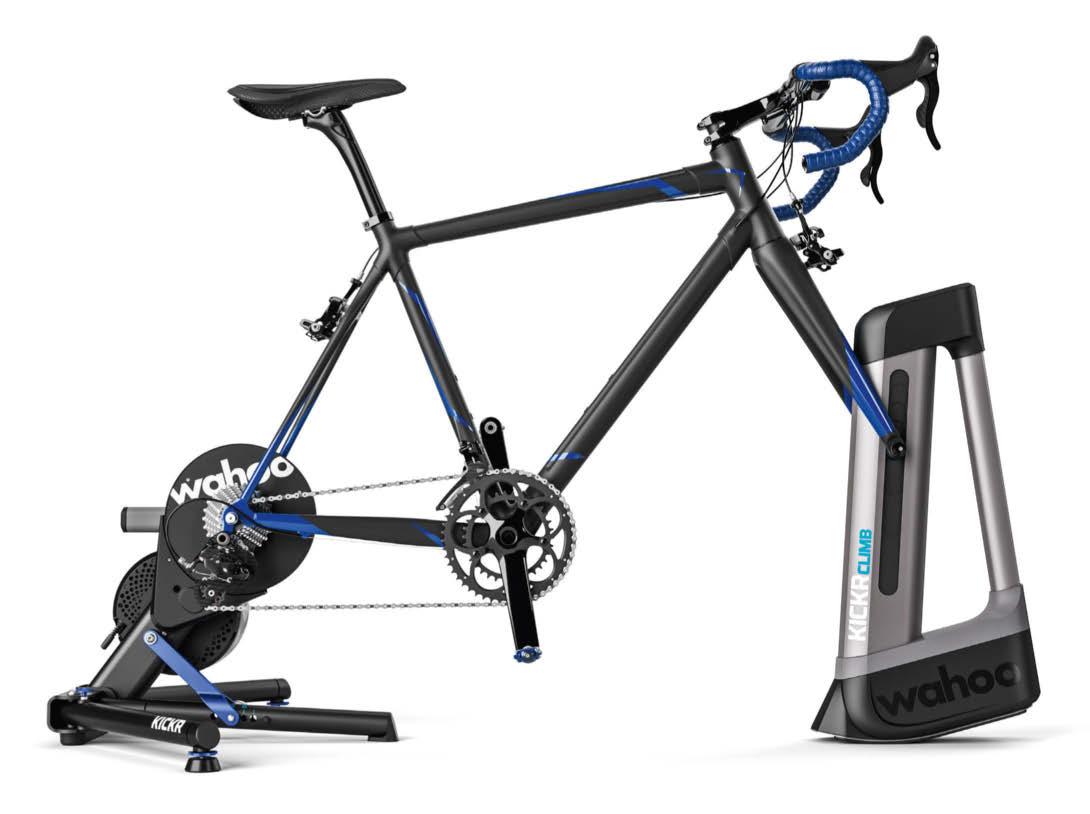
Indoor cycle trainers are no longer the preserve of masochists who spend their winters slogging away on an exercise bike in their pain cave with nothing more than the wall of a spare room or garage to distract them. Online training programmes such as Zwift and Wahoo X provide on-screen action to look at, and smart setups can automatically alter a trainer’s resistance depending on the gradient of the virtual road you’re on. But it’s hard to fully immerse yourself when your digital avatar is winching their way up an ascent while in real life you’re just grinding away on the flat.
The Kickr Climb from Wahoo raises the game – literally. It’s a device that replaces your bike’s front wheel and, via a belt-driven motor system, reacts in real time to the routes you’re riding on your training app of choice, simulating ascents, descents and any other undulations. There’s also a wired remote to manually adjust your incline. Not only does this up the realism stakes but it also encourages you to modify your riding position, helping engage a new range of muscles used when climbing a real road or mountain, and improving your abilities and pedalling technique when you finally head for the actual hills. wahooftness.com
(20 per cent) and white-knuckle, high-speed descents (-10 per cent)
Driving simulators have been a pillar of video gaming since Atari released Gran Trak 10 in 1974. But in half a century of pixel-based petrolhead action, only six games have captured that most iconic of motorsport events, the Dakar Rally. The latest, however, more than redresses the balance. In Dakar Desert Rally, more than 150 cars, bikes, trucks, quads and SSVs (think dune buggies) can be driven on 130 courses, putting the rally-raid giant firmly on the gaming map.
First staged in 1979, the continent-crossing race pits competitors against the clock on a predominantly off-road route and covers hundreds of kilometres each day. Originally raced between Paris and the Senegalese capital, Dakar, it has been held in Saudi Arabia since 2020. The changes in location haven’t lessened its difficulty, though.
“It takes you 10,000 kilometres to win, and you can lose it in five metres,” explains twotime Dakar Rally winner and reigning bike champion Sam Sunderland. The 33-year-old Brit, who stars as a playable character in the game, has experienced Dakar’s highs and lows, finishing on the podium four times but breaking five vertebrae and a shoulder blade in his most recent DNF (did not finish) in 2020.

The game has a fun, Mad Max-like, arcade-style Sport mode, but Simulation is the
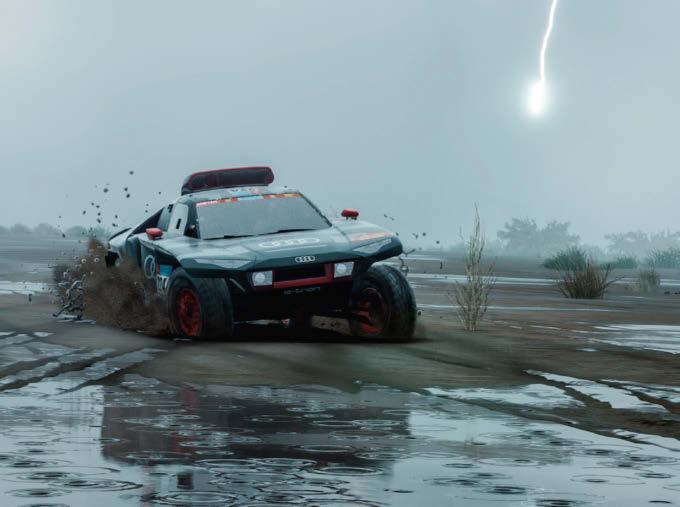
real deal. Every dune and river crossing of the last three rallies has been forensically recreated, while players navigate using the ‘road book’ – a turn-by-turn document with hieroglyphic-like symbols and compass points.
But Sunderland is here to decode more than just those symbols: “You’re better erring on the side of caution than smashing your way through it. I’ve learned the hard way.”
You’ll encounter various conditions, so don’t sweat the vehicle set-up. “The longest stage [there’s one per day, across 14 days] we did was 1,200km, so it’s like [planning for] riding conditions in London and Scotland at the same time,” says Sunderland. “You cross so many types of terrain – rivers, dunes, mountains –that you’re constantly in a state of adapting.”
“Most guys suffer in the dunes, says Sunderland. “Imagine riding your bicycle through sand or on dirt.” Living in Dubai for 10 years has helped him hone his approach to the shifting sands. “Search for the flattest, smoothest route and keep your wheels on the ground,” he says. “Don’t try to [clear gaps] unless you can see the other side.” But even Dakar champs have their weaknesses: “I don’t like riding through stony riverbeds – I find it unpredictable.” He advocates patience over impetuousness on this terrain – the scene of serious crashes and injuries over the years.
Brushing up on the road book’s symbols is vital for Simulation mode. A wrong turn adds time to your total, but it can also have serious consequences in the real world. “In 2014, I ended up on a track that looked really similar to the description. I ended up running out of water and was completely dehydrated. I started hallucinating and shivering –and it was 42°C.” Sunderland eventually found the right path and completed the stage, but he lost an hour and a half, and his shot at that year’s title.
Completing a stage in first place isn’t everything at Dakar. Stage winners set off first the following day and take to the course without other riders’ tracks as reference points. “It’s a Catch 22 – you don’t want to win a stage, but to win the race you need to,” says Sunderland. Trying to finish a close second isn’t an option, either. “The smallest amount of backing off can have huge consequences on the time. Most of the time, it’s all in, flat out.”
Dakar Desert Rally is available on PC, PlayStation and Xbox; dakarthegame.com. Sam Sunderland is competing in the 2023 Dakar Rally from December 31 to January 15.
Instagram: @sundersam
The British outdoors is a magical place. From the climbing crags of the Cairngorms to the depths of Dartmoor’s caves, it offers up a wide range of unique environments for a whole host of adventures and activities.
Picturesque, varied and – generally – free to access, it’s easy to find a corner of countryside worth exploring, whatever your pursuit.
This close proximity to adventure is worth protecting. Although it can be dispiriting to think what you as an individual can do against climate change, one choice you can make is the sustainability of the clothes on your back.
A lot of brands claim to be making it simpler for amateur and elite explorers alike to leave a positive impact on the environments they love – whether that’s by adding a recycled material here or an organic cotton there. But few have gone as far as Cotopaxi.
The Salt Lake City-based company was founded to make a difference and address some of the major problems that affect the world – climate change, poverty and social inequalities. It’s not just marketing material, either. These pillars are at the heart of everything it does, and the brand is pioneering a different
approach to outdoor wear and accessories.
Throughout its whole production process, the planet and its people are at the forefront. Supply chains and manufacturing practices are checked to ensure that they’re ethically sound, while Cotopaxi has committed to making all its products using recycled, repurposed or responsible
materials by 2025 – limiting its dependence on fossil fuels and minimising waste as a result. This is already evident in its range, too, whether it’s the use of recycled fleece or polyester taffeta offcuts that would otherwise have ended up in landfill.
It’s not content to stop at ecofriendly materials, though. One per cent of its revenues is allocated to the Cotopaxi Foundation – an organisation that awards multi-year grants to non-profits that focus on addressing systematic poverty, such as the International Rescue Committee (IRC), Mercy Corps and Nothing But Nets.
A certified B Corporation and Climate Neutral Certified company to boot, if you’re looking for outdoor wear that does good, look no further than Cotopaxi.



Rachael Efta grew up on the mountain. While at school in Stevens Pass, Washington, USA, she skied four times a week, raced competitively, and even during the summer offseason left her home in search of snow. After graduating, Efta swapped the snow for the sun of San Francisco, attending art school, but the pull of the mountains soon brought her back – to Big Sky Resort, Montana, the second-largest ski resort in the States. Until then, she’d never considered ski patrol as a potential career path. “I didn’t see women on the patrols I was around,” says Efta, now 30, “so I couldn’t imagine myself doing it.”
A presence at every resort, ski patrol is easy to recognise thanks to its Helly Hansen kit and medical cross crest. The job is varied, but at its core it ensures ski runs and routes are safe to open, while also acting
as a first response to medical and rescue emergencies.
Even while working at Big Sky, the path to ski patrol was not a foregone conclusion. “I wanted to keep pushing myself in the mountains. To do that responsibly, I got my EMT [emergency medical technician] certification – the same level as someone who works in an ambulance.” Qualifications and courses in outdoor leadership followed. Then a ski-patroller friend told her she was missing out on the best job on the mountain. “Everything never really aligned until it was so obvious it pretty much bit me.”
A decade on, Efta helps oversee a 130-strong team of
professional ski patrollers. Here, she reveals what it’s like riding Big Sky’s rescue runs…

Before the resort can open to the public, ski patrol conducts avalanche hazard mitigation on all routes. It determines whether any fresh overnight snow needs to be cut – skied across to see if an avalanche starts – or if it would be safer to perform a controlled avalanche to remove the risk. “At 7am, we ride the chairlift to ‘the fort’ – our morning cache of explosives,” says Efta. “We arm up based on conversations we’ve had with the forecaster and our own ideas of what we’re walking into. It can be one of the most intense parts of the day and also one of the parts that keep people hooked. We use two pounds of hand charges [for controlled explosions]. I always get
butterflies before a detonation – it’s a powerful feeling.”
The skiing skills of a patroller extend beyond being able to whizz down black runs. “On top of being in terrain that’s already challenging, you have to be comfortable carrying awkward objects like signage, safety material, snow fences or a vacuum mattress. [The latter] is a parachute-like thing that’s carried behind you, used for spinal immobilisation.”
Responding to an emergency at Big Sky – 5,800 acres (almost the area of 4,000 football pitches) covered in snow and pine trees – would seem like finding a needle in a haystack, requiring an encyclopaedic knowledge of the range. “I can move patient care or resources around in creative ways based on the mountain mapped out in my head, says Efta. “You understand the nooks and crannies and the intimacies of travelling around that nobody else has to think about.”
Efta and her team spend the weeks before the resort’s Thanksgiving public opening role-playing different scenarios such as “chairlift evacuations from our bubble chairs” or “rescue the rescuer – working on what to do if one of us becomes impaired while performing the rescue”. The hardest incident to deal with?
“When people are injured in the furthest stretches of our resort. The scenario goes through my brain all the time. What resources do I need? What phone calls do I make to get these people out of this situation? It’s a game of chess.” Helly Hansen supports ski patrols globally with gear that holds up in the worst conditions.
To celebrate International Ski Patrol Day on February 10, 2023, a percentage from sales on HH.com will be donated to ski patrols across the world
“I always get butterflies before a detonation”
Rachael Efta, ski-patrol supervisor
Buying your own snowboard is a rite of passage for any half-serious powder junkie. But travelling with your own board inevitably comes with increased risks. While they’re built to survive most slams onand off-piste, boards can easily be damaged in transit, where they’re exposed to blunt objects (aka baggage handlers).

The London-based founders of Snowtech Products discovered this the hard way. Despite wrapping a limited-edition snowboard in foam before packing it snugly in its bag ready for transit, they arrived to find a large indent to the steel edge and separation of various layers. The airline wasn’t particularly helpful, while sourcing a suitable replacement or repair was a timeconsuming and costly process – not the ideal way to start a trip.
After scouring the internet for a solution, they came away emptyhanded. Rather than run the risk of more broken boards, they decided to do something about it. A year and a half later, Venom was born.
Designed and manufactured in the UK from industrial-grade silicone that’s cured to protect and stay in place on your board, it comes as a 3.75m-long piece that can be cut specifically to your board’s length – leaving no weak spots in the process. The construction itself is two-fold. The top half is triangularshaped with a hollow centre and is built to absorb blunt-force impacts. The bottom half, meanwhile, is angled to minimise rocking and conforms to the snowboard’s edge.

Made to be used in conjunction with a board bag to provide the ultimate protection, it has the added bonus of extending the life of your luggage by reducing the rubbing between your board’s sharp edge and the bag’s inner lining. Venom
will also prevent any gouges to your vehicle’s interior – handy for getting your hire-car deposit back. Available in four different colours and already shipped to customers worldwide, this reusable bit of kit will not only help extend the life and integrity of your investment but also remove the risk next time you travel.
To find out more, head along to snowtechproducts.com
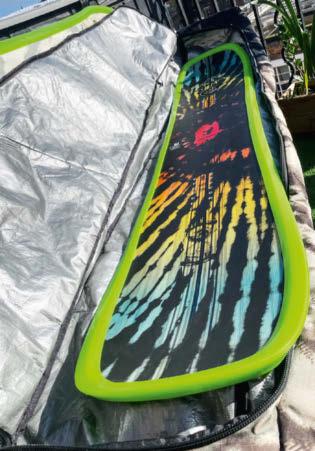
You’re looking at no ordinary bouldering wall. This is the 220m-high Verzasca Dam in Switzerland, the location of James Bond’s breathtaking bungee jump from GoldenEye. Now it’s famous for something else: this first-of-a-kind, head-to-head climbing competition. In October, 16 of the world’s best climbers, including US phenom Sasha DiGiulian, Swiss legend Petra Klingler and Spanish Olympic gold medallist Alberto Ginés López, teamed into roped pairs, spent three days speed-climbing and redpointing (meaning they’d never climbed the routes before). We won’t reveal the winners; instead, catch all the drama in the documentary on Red Bull TV. redbull.com
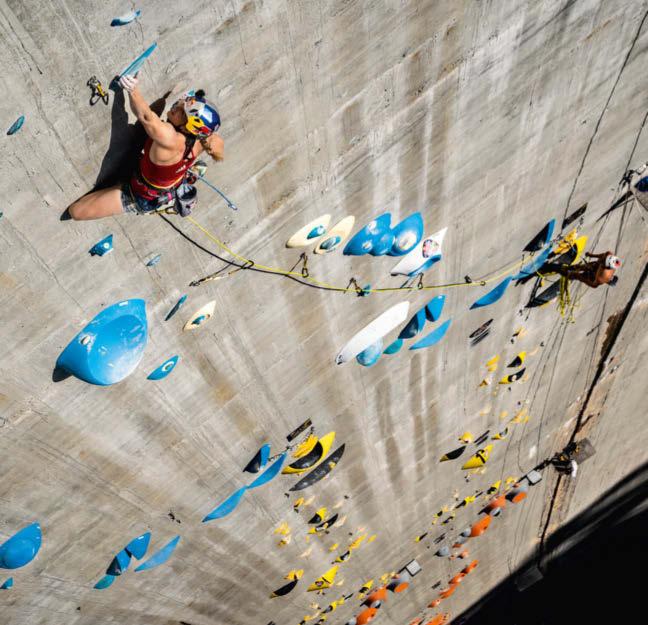
For Formula 1 fans seeking solace in the dark days between race seasons comes the world’s first F1-licensed competition gaming venue, from the minds that turned darts (Flight Club) and ping pong (Bounce) high-tech. With 60 motion-feedback simulators running the same sim software used by F1 teams, players can race against each other, in teams, or against everyone in the arcade. And for those not driving home, there are champagne cocktails. Just don’t spray them on the losers. One New Change, London; f1arcade.com
The ’70s gangster movie famed for kids in spats singing in adult voices and firing cream pies from Tommy guns, as well as for launching Jodie Foster to superstardom, gets the stage treatment. Just wear a shower cap if you’re in the front row. Alexandra Palace, London; bugsymalonethemusical.com
More than a roller rink, this live music venue, diner and skate shop in a Grade-II listed former power station is the brainchild of British model Liberty Ross, in homage to the LA skate rink her father Ian ran in the late ’70s/early ’80s. Exhibition House, London; flippers.world
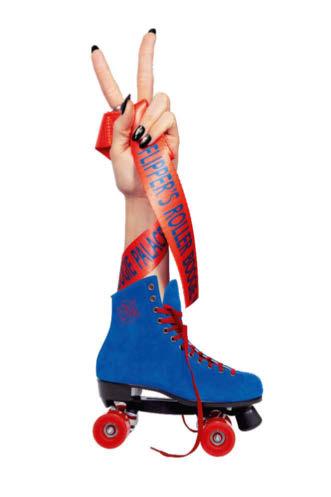
Body language: for most of us, it’s an unconscious disclosure of our thoughts, but for mime artists it’s a form of communication transcending language. Among this year’s 15 performances you’ll find lip-syncing, masks, silhouettes, puppet deaths, polystyrene brought to life, homages to silent greats like Charlie Chaplin and Stan Laurel, and poignant pieces such as a journey into Alzheimer’s co-curated by a neuroscientist. Truly a moving art-form. Venues across London; mimelondon.com






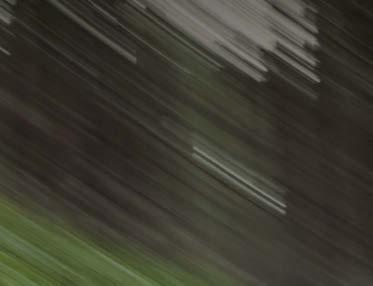
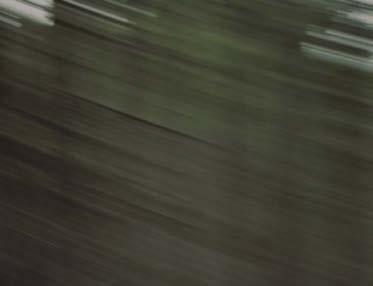








A pioneer in the world of mountain sports for three-quarters of a century, Salomon presents its latest forwardthinking design: the new S/Pro Alpha
Snow sports were a whole different world in the 1940s. Boarding was still two decades in the future, alpine skiing was in its primitive stages as resorts installed their first lifts, and Nordic cross-country was king.
It was in this environment that the French outdoor equipment brand Salomon was born. Founded by the father-and-son duo of François and Georges Salomon in a small workshop in the alpine city of Annecy, its first patented product was bevelled ski edges. The company has been at the heart of mountain sports ever since, expanding from winter into year-round pursuits, and it has helped professional and amateur athletes alike break new ground.
Combining revolutionary releases with a constant desire to look to the future, here’s how Salomon has remained at the forefront during 75 years of creativity…

Father-and-son François and Georges Salomon file a patent for bevelled ski edges – a new design technique that increases grip on ice and hardpacked snow. Located in the heart of the French Alps, their company is ideally placed for the post-war ski boom.
In 1955, Salomon releases the Skade, one of the first releasable toe pieces. This is followed two years later by Le Lift – a safetyfocused cable-binding heel that replaces traditional leather straps. Upgrades and updates follow, eventually resulting in the S505 – the first-ever step-in heel piece. By the end of a decade that sees a human set foot on the Moon, Salomon has made its own giant leap and become the world’s numberone binding maker.
Salomon introduces the first – and now iconic –SX90 rear entry ski boot, which provides easy access and fantastic heel retention. In 1984, the company
launches its first ski, the S9000. An innovative design based on a monocoque structure, it’s the first product in a hugely successful ski collection.
If launching its first skis and snowboard weren’t enough, the ’90s also see Salomon dip its toe into summer sports with the release of its adventure hiking range. By the early 2000s, the brand designs a precursor to what would become a trail running shoe. Then, at the end of the decade, Salomon helps the thenunknown 20-year-old Spanish runner Kílian Jornet claim his first UltraTrail du Mont-Blanc title.
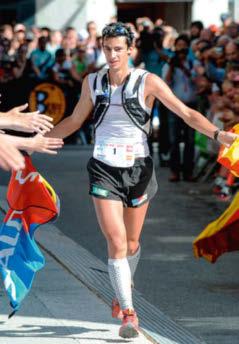 Salomon’s revolutionary Skade toe piece, designed in 1955
Company founders Georges (left) and François Salomon
Kílian Jornet wins the 2008 UTMB in Salomon shoes
CHARLIE ALLENBY
Salomon’s revolutionary Skade toe piece, designed in 1955
Company founders Georges (left) and François Salomon
Kílian Jornet wins the 2008 UTMB in Salomon shoes
CHARLIE ALLENBY
Developed with input from boot fitters around the world, the S/Pro Alpha is designed for on-piste skiers looking for outstanding performance and excellent foothold. The S/Pro Alpha is the pinnacle of downhill-focused footwear. Both shell and liner are easily customisable, while the heel grip is improved by the relocation of the instep buckle, without putting unnecessary pressure on your instep. Available in a range of flexes, comfort and performance levels will be instantly boosted. salomon.com

Salomon’s dominance in the outdoor sports market continues.

Its XT-6 trail running shoe helps push athletes to ultra-distance efforts, while the brand also breaks into the fashion world. Its patented My Custom Fit 3D technology adds instant comfort to ski boots, allowing the shoe to be moulded to the wearer.
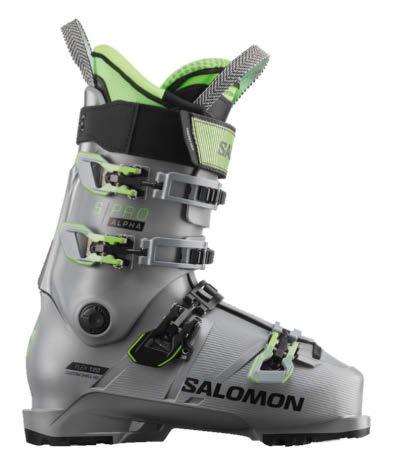
The Red Bulletin is published in six countries. This is the cover of our Austrian edition for January, featuring basketball star Jakob Pöltl, who plays centre for NBA team San Antonio Spurs.

For more stories beyond the ordinary, go to: redbulletin.com
Editor Andreas Kornhofer
Editor-in-Chief
Andreas Rottenschlager
Creative Directors
Erik Turek (manager), Kasimir Reimann
Copy Chiefs
David Pesendorfer, Andreas Wollinger Art Directors
Marion Bernert Thomann, Miles English, Tara Thompson
Designers
Martina de Carvalho Hutter, Kevin Faustmann-Goll, Cornelia Gleichweit
Photo Editors
Eva Kerschbaum (manager), Marion Batty (deputy), Susie Forman, Tahira Mirza, Rudi Übelhör
Digital Editors
Christian Eberle-Abasolo (manager), Lou Boyd, Marie-Maxime Dricot, Melissa Gordon, Lisa Hechenberger, Elena Rodriguez Angelina, Benjamin Wolf
Editor-in-Chief Global Content
Tom Guise
Head of Audio Florian Obkircher
Managing Editors
Ulrich Corazza, Marion Lukas Wildmann Publishing Management
Sara Car-Varming (manager), Ivona Glibusic, Bernhard Schmied, Melissa Stutz, Julian Vater Head of Media Sales & Partnerships
Lukas Scharmbacher
Editorial Director A lexander Müller-Macheck Head of Co Publishing Susanne Degn Pfleger Project Management Co-Publishing, B2B Marketing & Communication
Katrin Sigl (manager), Katrin Dollenz, Michaela Kroboth, Teresa Kronreif, Eva Pech, Valentina Pierer, Stefan Portenkirchner, Jennifer Silberschneider, Sophia Wahl
Creative Services Verena Schörkhuber-Zöhrer (manager), Sara Wonka, Tanja Zimmermann, Julia Bianca Zmek, Edith Zöchling-Marchart
Commercial Management Co-Publishing Alexandra Ita Editorial Co Publishing Raffael Fritz (manager), Gundi Bittermann, Michael Hufnagl, Irene Olorode, Mariella Reithoffer, Wolfgang Wieser
Executive Creative Director Markus Kietreiber Senior Manager Creative Elisabeth Kopanz Art Direction Commercial & Co-Publishing
Peter Knehtl (manager), Erwin Edtmayer, Simone Fischer, Martina Maier, Andreea Parvu, Carina Schaittenberger, Alexandra Schendl, Julia Schinzel, Florian Solly, Dominik Uhl, Sophie Weidinger, Stephan Zenz
Direct to Consumer Business Peter Schiffer (head), Marija Althajm, Victoria Schwärzler, Yoldaş Yarar
Retail & Special Projects Manager Klaus Pleninger
Advertising Manuela Brandstätter, Monika Spitaler
Production Veronika Felder (manager), Martin Brandhofer, Walter O. Sádaba, Sabine Wessig Repro Clemens Ragotzky (manager), Claudia Heis, Nenad Isailović, Sandra Maiko Krutz, Josef Mühlbacher
Finance Mariia Gerutska (manager), Elisabeth Maier MIT Martin Bartmann, Christoph Kocsisek, Michael Thaler
IT Service Desk Maximilian Auerbach
Operations Alice Gafitanu, Melanie Grasserbauer, Alexander Peham, Thomas Platzer, Raphaela Pucher
Assistant to General Management Sandra Artacker
Project Management Dominik Debriacher
CEOs Red Bull Media House Publishing
Andreas Kornhofer, Stefan Ebner
Editorial office Am Grünen Prater 3, A 1020 Vienna
Phone +43 1 90221 0 Web redbulletin.com
Published by Red Bull Media House GmbH, Oberst-Lepperdinger-Straße 11–15, A-5071 Wals bei Salzburg, FN 297115i, Landesgericht Salzburg, ATU63611700
Executive Directors
Dkfm. Dietrich Mateschitz, Dietmar Otti, Christopher Reindl, Marcus Weber
THE RED BULLETIN
United Kingdom, ISSN 2308-5894
Editor
Ruth McLeod
Chief Sub-Editor
Davydd Chong
Publishing Manager

Ollie Stretton
Advertising Sales Mark Bishop, mark.bishop@redbull.com
Printed by Quad/Graphics Europe Sp. z o.o., Pułtuska 120, 07-200 Wyszków, Poland
UK Office
Seven Dials Warehouse, 42-56 Earlham Street, London WC2H 9LA Tel: +44 (0) 20 3117 2000
Subscribe getredbulletin.com
Enquiries or orders to: subs@uk.redbulletin.com. Back issues available to purchase at: getredbulletin.com Basic subscription rate is £20.00 per year. International rates are available. The Red Bulletin is published 10 times a year. Please allow a maximum of four weeks for delivery of the first issue Customer Service +44 (0)1227 277248, subs@uk.redbulletin.com
THE RED BULLETIN
Germany, ISSN 2079-4258
Editor
Maximilian Reich
Proofreaders
Hans Fleißner (manager), Petra Hannert, Monika Hasleder, Billy Kirnbauer-Walek
Country Project Management
Lisa Masten
Media Sales & Partnerships
Thomas Hutterer (manager), Michael Baidinger, Maggie Childs, Franz Fellner, Ines Gruber, Moritz Philipp Haaf, Wolfgang Kröll, Gabriele Matijevic-Beisteiner, Yvonne Mensik, Alfred Vrej Minassian, Nicole Okasek-Lang, Britta Pucher, Johannes WahrmannSchär, Ellen Wittmann-Sochor, Nicole Umsait, Ute Wolker, Christian Wörndle, Sabine Zölß
THE RED BULLETIN
Switzerland, ISSN 2308-5886
Editor Stefania Telesca
Proofreaders
Hans Fleißner (manager), Petra Hannert, Monika Hasleder, Billy Kirnbauer-Walek
Country Project Management Meike Koch
Media Sales & Brand Partnerships
THE RED BULLETIN Austria, ISSN 1995-8838
Editor
Nina Kaltenböck
Proofreaders
Hans Fleißner (manager), Petra Hannert, Monika Hasleder, Billy Kirnbauer-Walek Publishing Management
Bernhard Schmied
Media Sales & Partnerships
Thomas Hutterer (manager), Michael Baidinger, Maggie Childs, Franz Fellner, Ines Gruber, Moritz Philipp Haaf, Wolfgang Kröll, Gabriele Matijevic-Beisteiner, Yvonne Mensik, Alfred Vrej Minassian, Nicole Okasek-Lang, Britta Pucher, Johannes Wahrmann-Schär, Ellen Wittmann-Sochor, Nicole Umsait, Ute Wolker, Christian Wörndle, Sabine Zölß
Christian Bürgi (team leader), christian.buergi@redbull.com Marcel Bannwart, marcel.bannwart@redbull.com
Jessica Pünchera, jessica.puenchera@redbull.com
Michael Wipraechtiger, michael.wipraechtiger@redbull.co
Goldbach Publishing Marco Nicoli, marco.nicoli@goldbach.com
THE RED BULLETIN
USA, ISSN 2308-586X
Editor-in-Chief Peter Flax
Deputy Editor Nora O’Donnell
Copy Chief David Caplan Publishing Management Branden Peters
Advertising Sales
THE RED BULLETIN
France, ISSN 2225-4722
Editor
Pierre-Henri Camy
Country Coordinator
Christine Vitel
Country Project Management
Alexis Bulteau
Contributors, Translators and Proofreaders
Étienne Bonamy, Frédéric & Susanne Fortas, Suzanne Kříženecký, Claire Schieffer, Jean-Pascal Vachon, Gwendolyn de Vries
Marissa Bobkowski, marissa.bobkowski@redbull.com Tanya Foster, tanya.foster@redbull.com Todd Peters, todd.peters@redbull.com
Dave Szych, dave.szych@redbull.com
Dress stylishly and sustainably for the slopes this season in OOSC’s new collection
If you’ve been anywhere near a ski resort over the last decade, you’ll have noticed the growing array of one-piece ski suits. Loud, brightly coloured, and with designs that pay homage to retro designs reminiscent of The Fresh Prince of Bel-Air or sported by skiing (and literal) royalty, they’re bound to have turned your head on the slopes and at après parties.

Pioneered by the independent UK-based brand OOSC, they’ve brought ’80s flare to the sensible and safe designs of modern snow wear. Jazzy onesies aren’t for everyone, though, and it’s understandable if you’d rather invest in a slightly more subtle two-piece set-up for this season. Fortunately, OOSC has got you covered here, too.
Its versatile range features jackets, pants and bibs that go big on block colours. From bright burnt orange and neon pink to more muted khaki and black options, each two-piece can be mixed and matched to suit your personal style.
OOSC’s kit is about much more than looks, though. The jackets can rival anything else on the mountain when it comes to technical abilities – even if you’ve only just graduated from the nursery slopes. Its ‘Yeh’ jacket achieves the maximum possible breathability and waterproofing ratings while also packing 80g of synthetic insulation to keep you toasty between runs. OOSC’s bottoms are
equally capable and have some handy features up their trouser legs, too, including ankle gaiters and a fleecelined pad to keep your nether regions warm on the lift back to the top.
If that wasn’t enough, OOSC’s outerwear range enables you to make your ski or snowboard trip that bit more sustainable. The brand led the way with its use of reclaimed materials when it made a commitment to source recycled polyester and organic cotton back in 2018. Today, its range includes recycled nylon made from old fishing nets, recycled polyester from plastic bottles and organic cotton grown in Europe to help reduce each garment’s carbon footprint, leaving you equally stylish and sustainable when hitting the slopes.


“So, obviously you’ve been in the situation during a long day of hiking or running where you and a friend start talking about something, and you start riffing on some sort of ridiculous joke, and you know you’ll just forget about this joke that’s only funny to the two of you, so you go home and make a series of drawings to commemorate the joke – or, at least, what you can remember of all the variations both of you bounced back and forth – so you can make it into a poster your friend can frame and put on the wall of their small house not so far from the Matterhorn… Oh, you haven’t?
I guess it’s just me, then, with this Matterhorn joke.”
The next issue of THE RED BULLETIN is out on February 14





